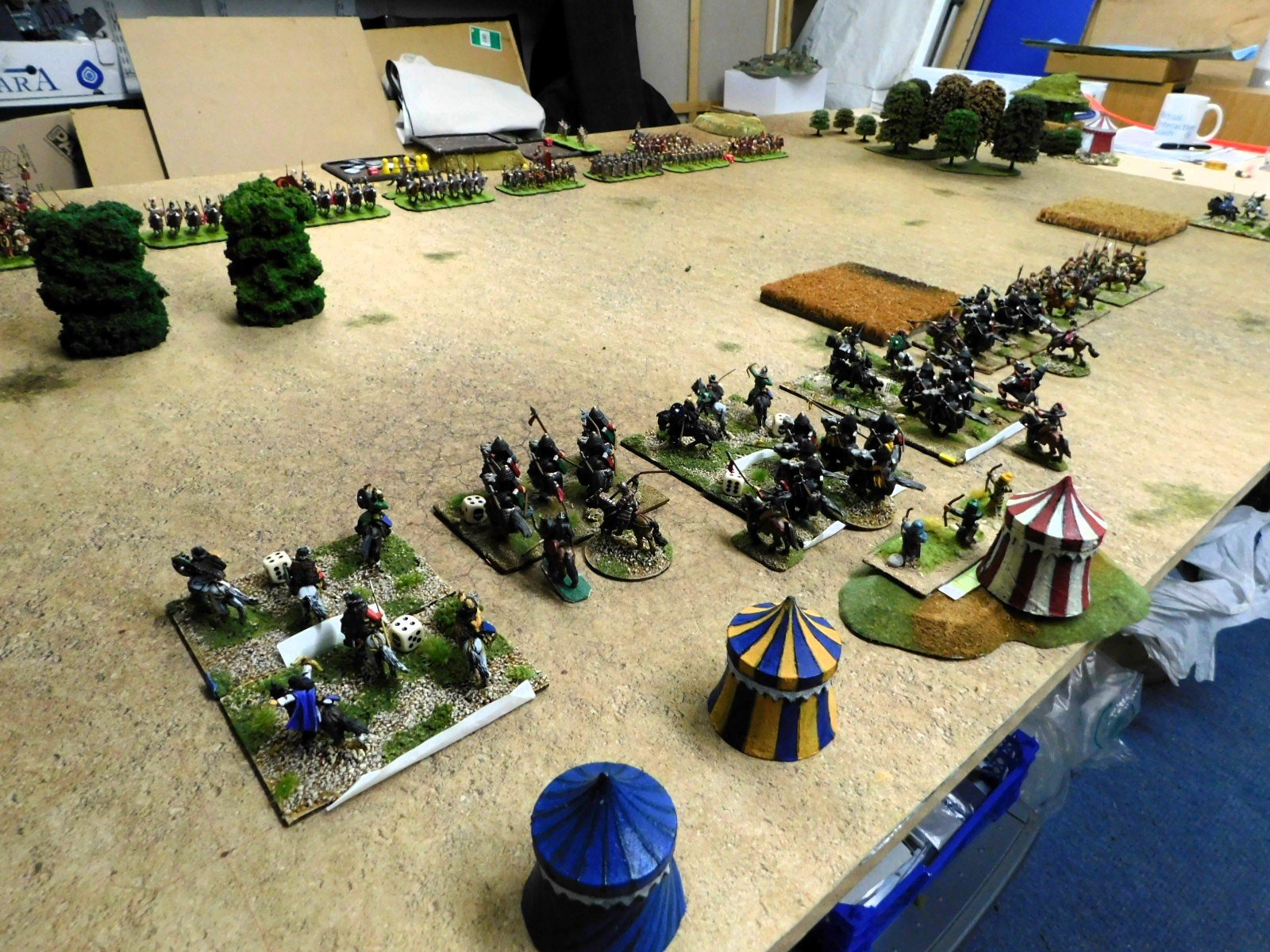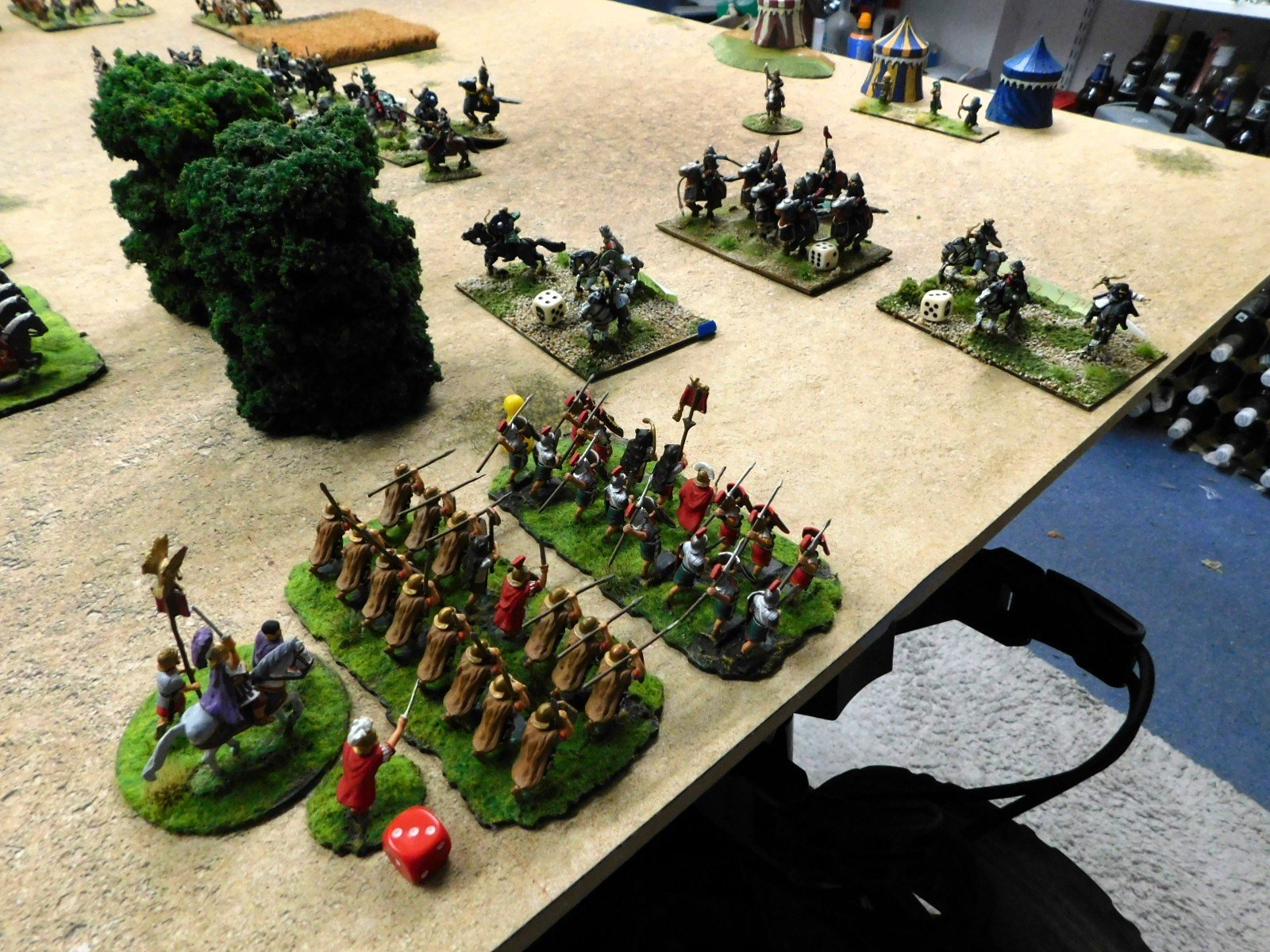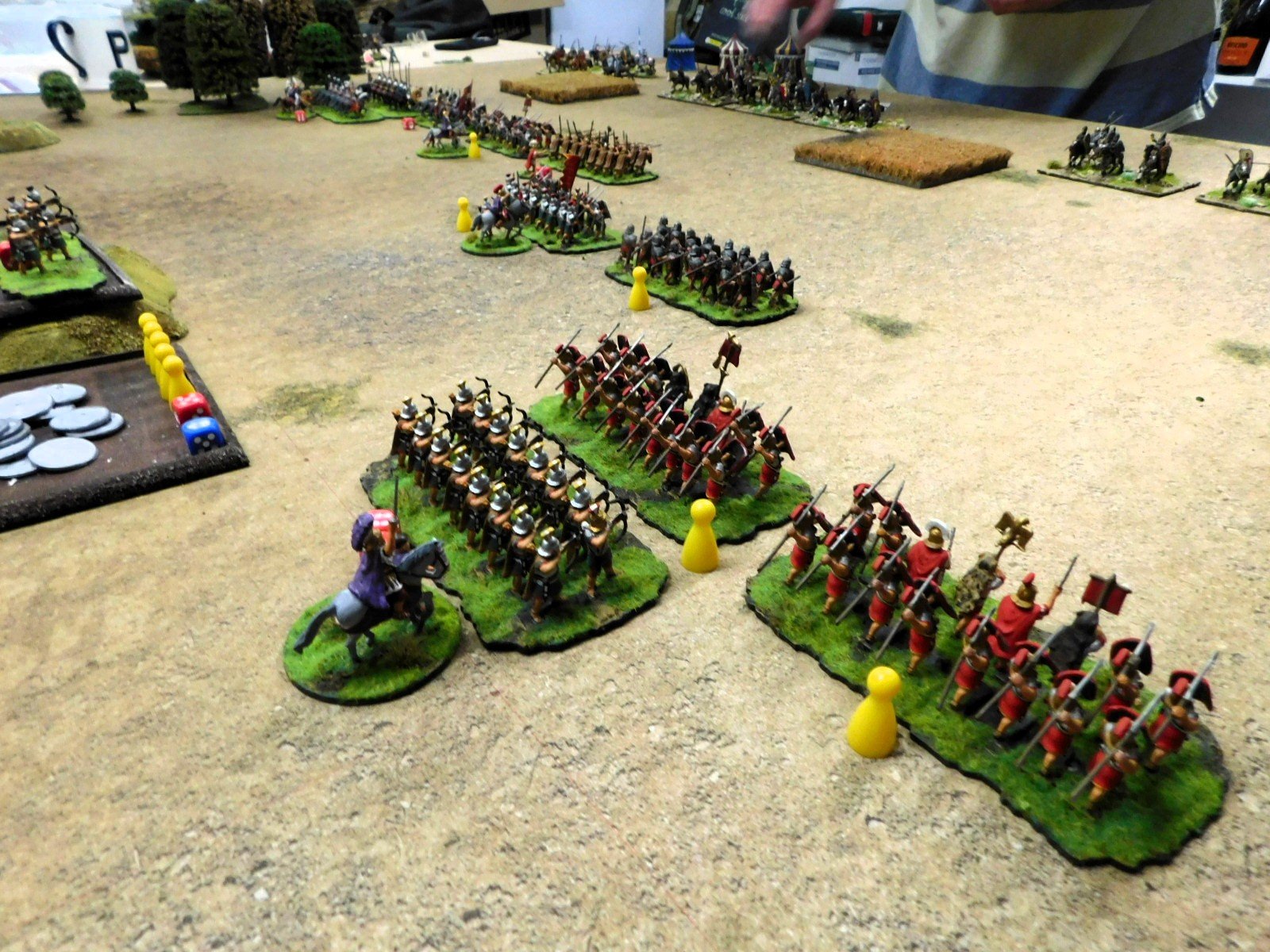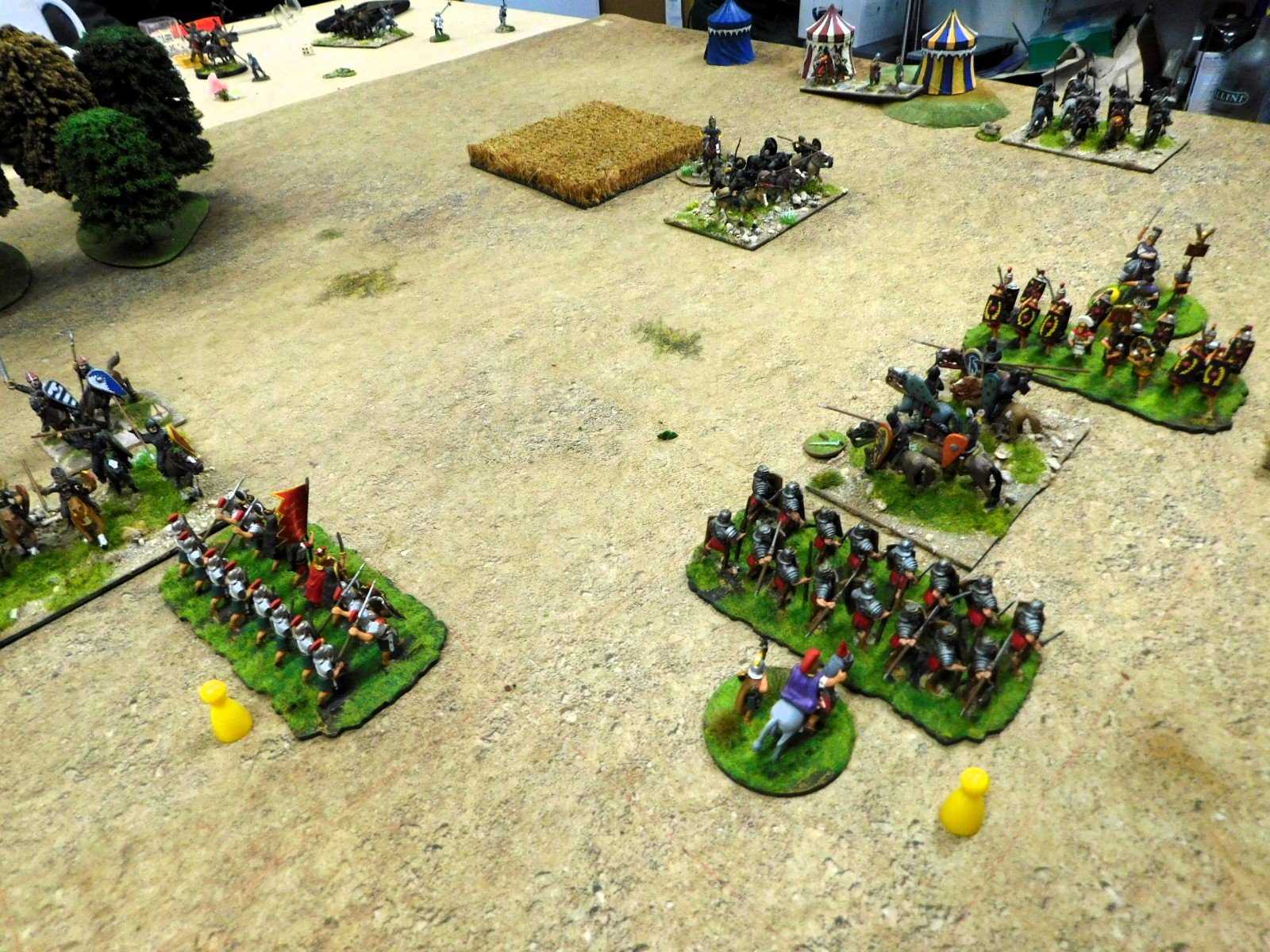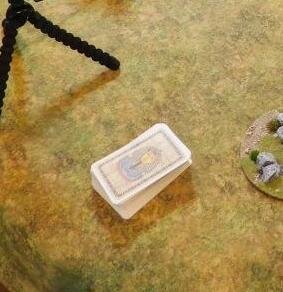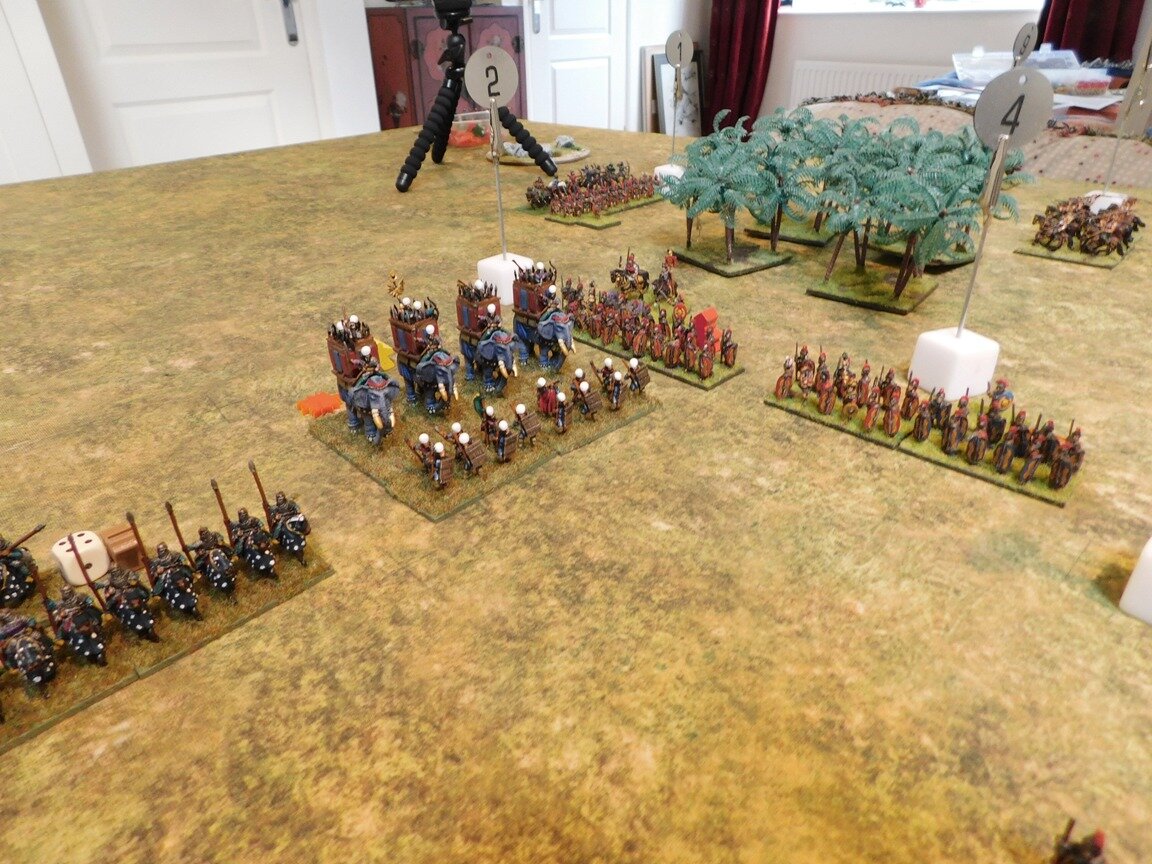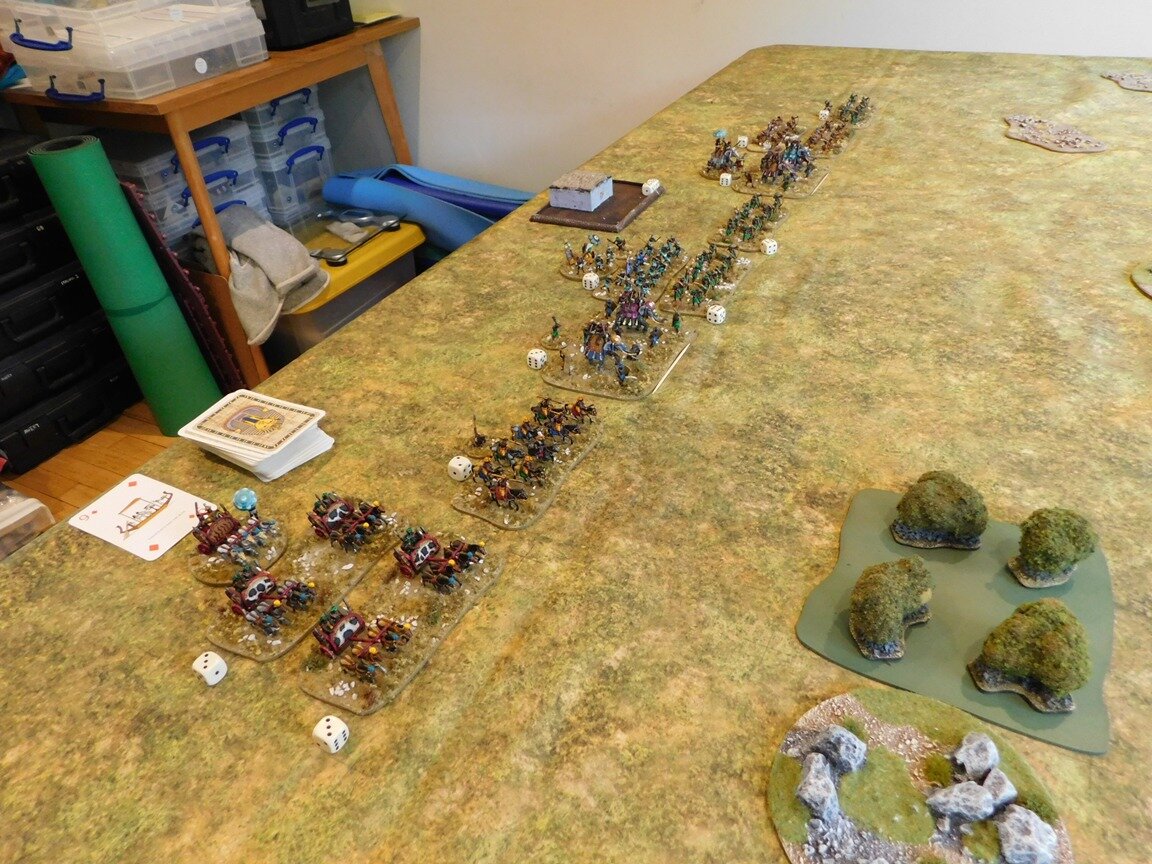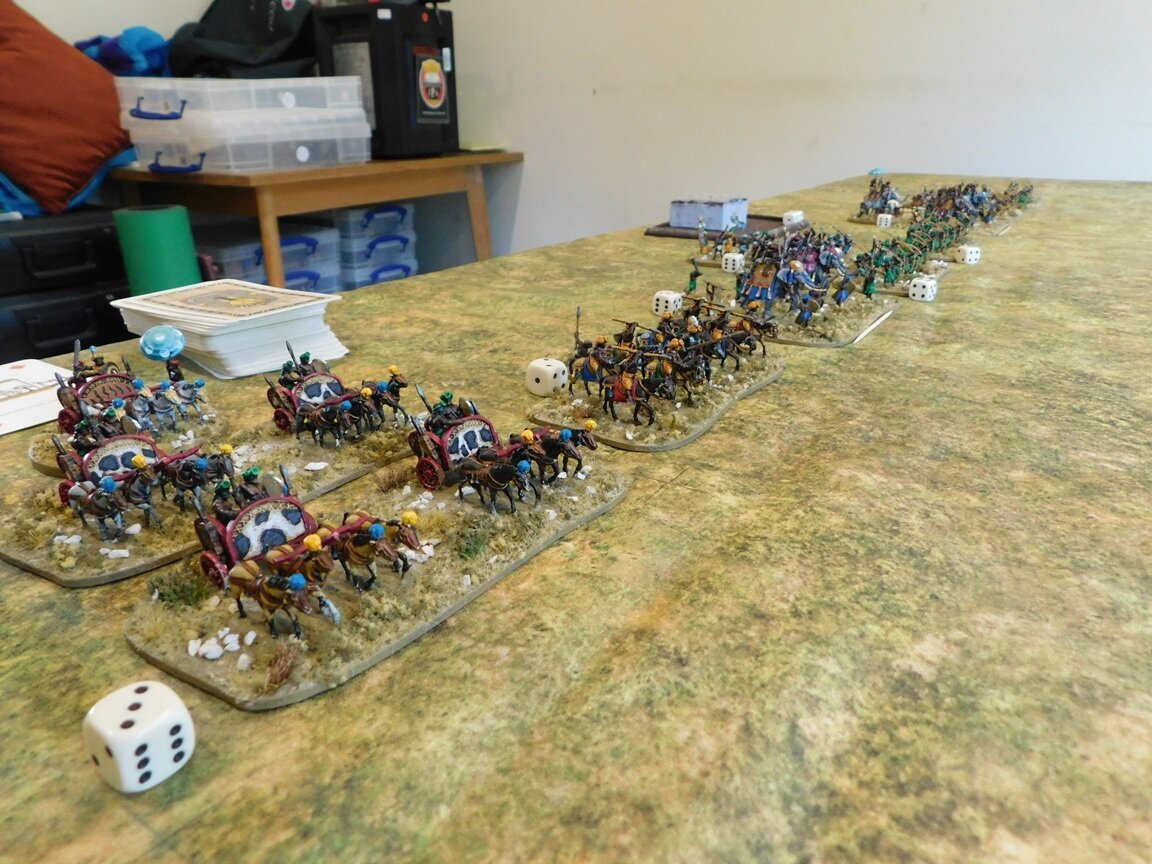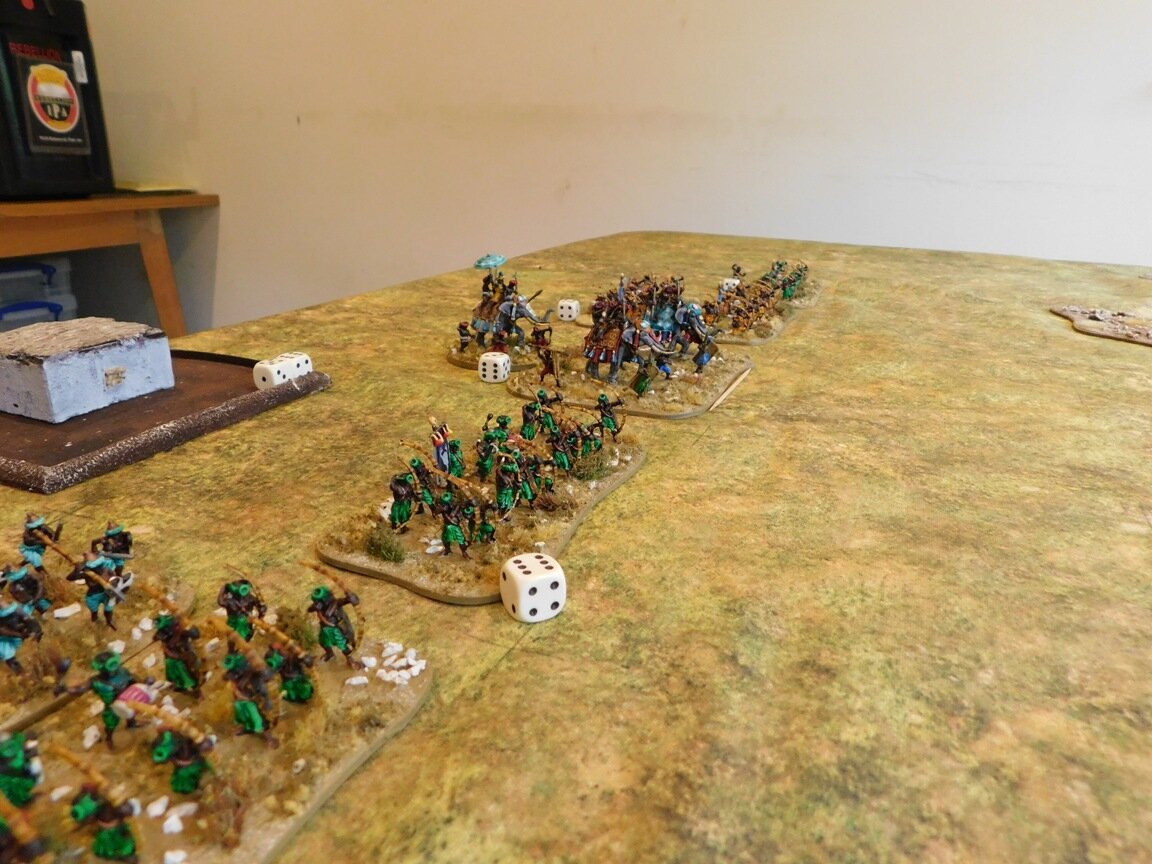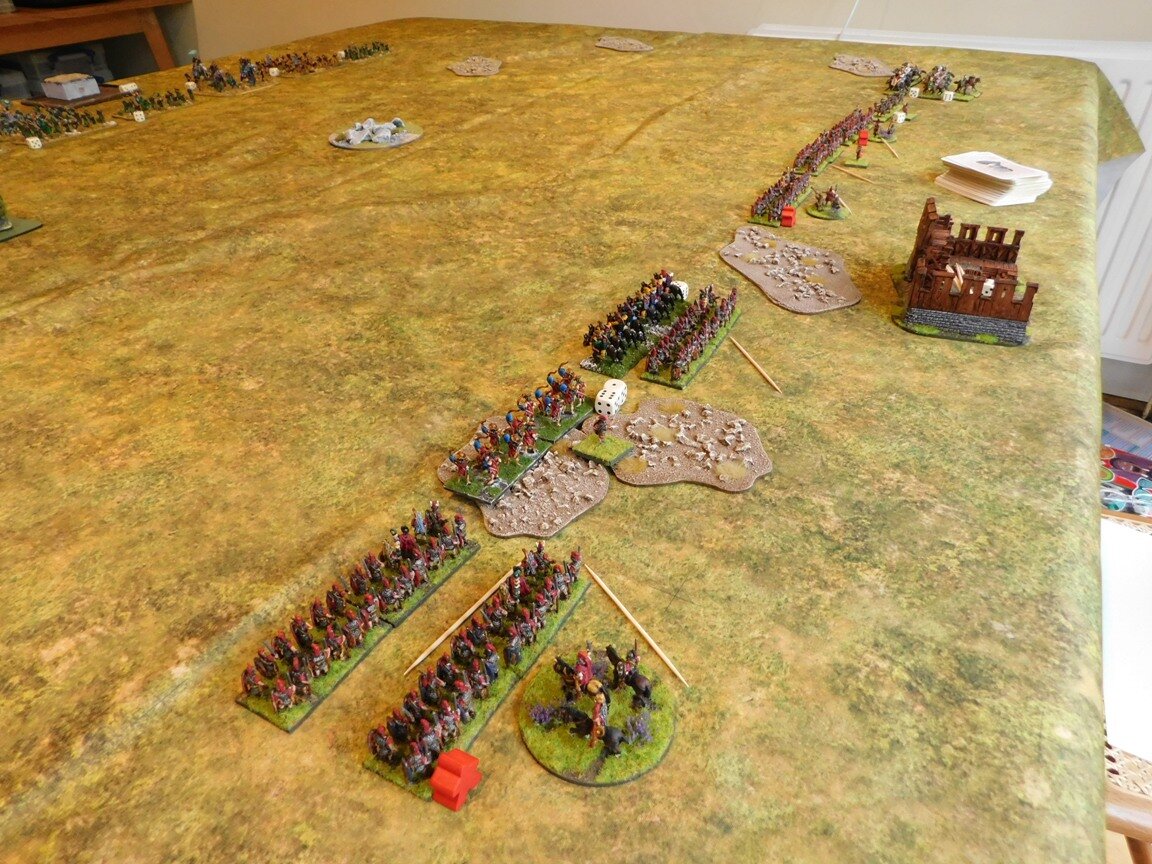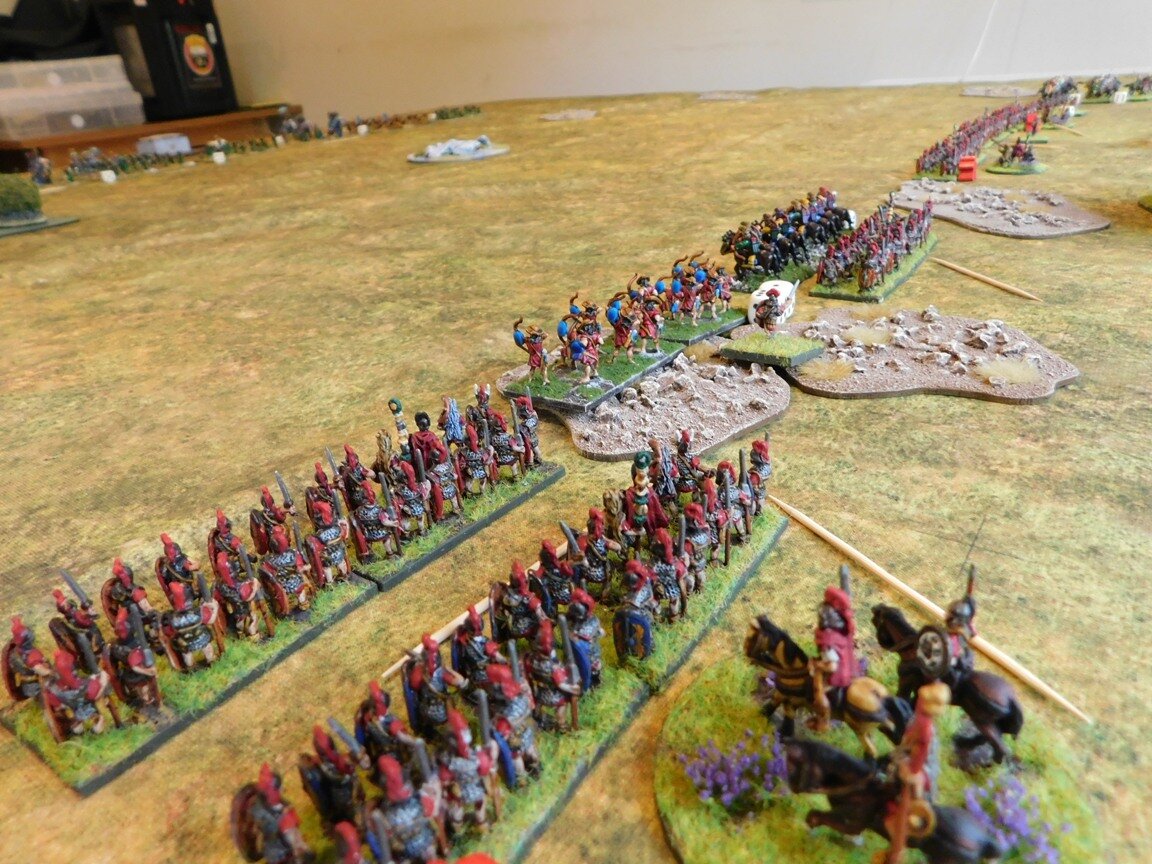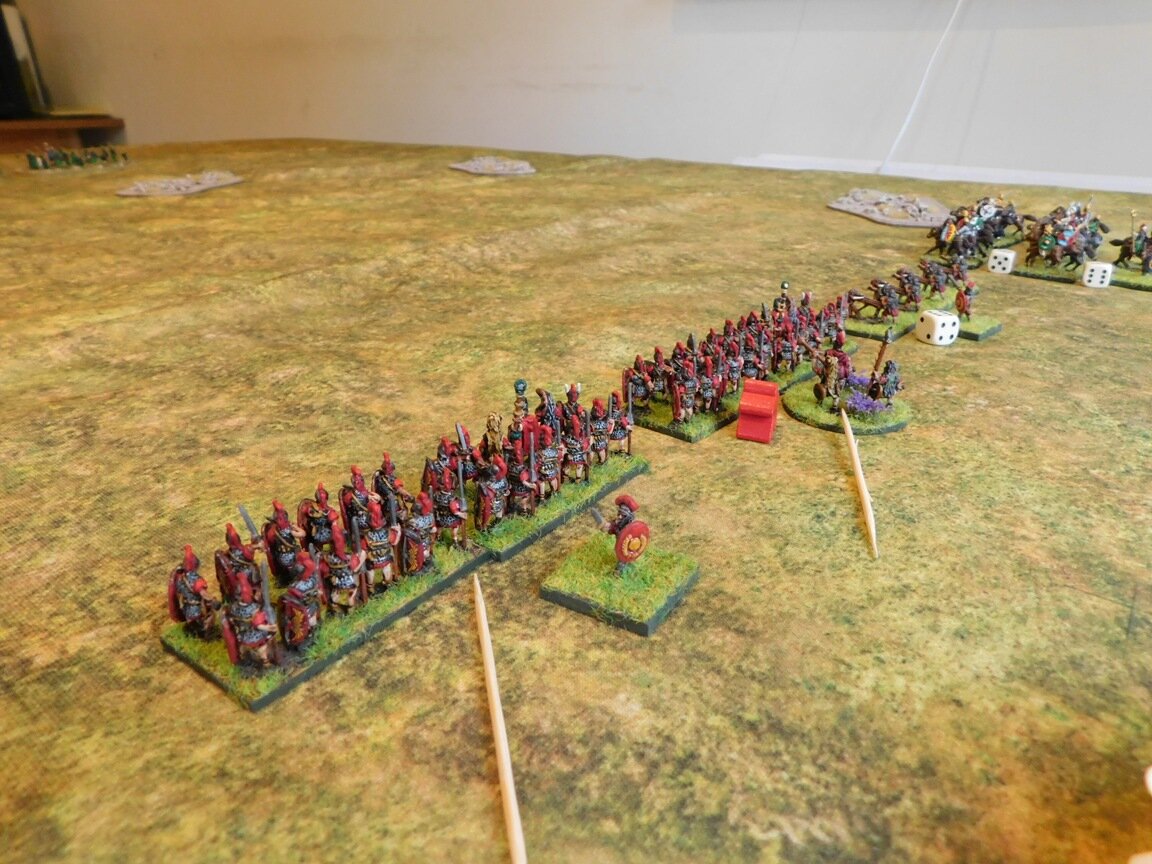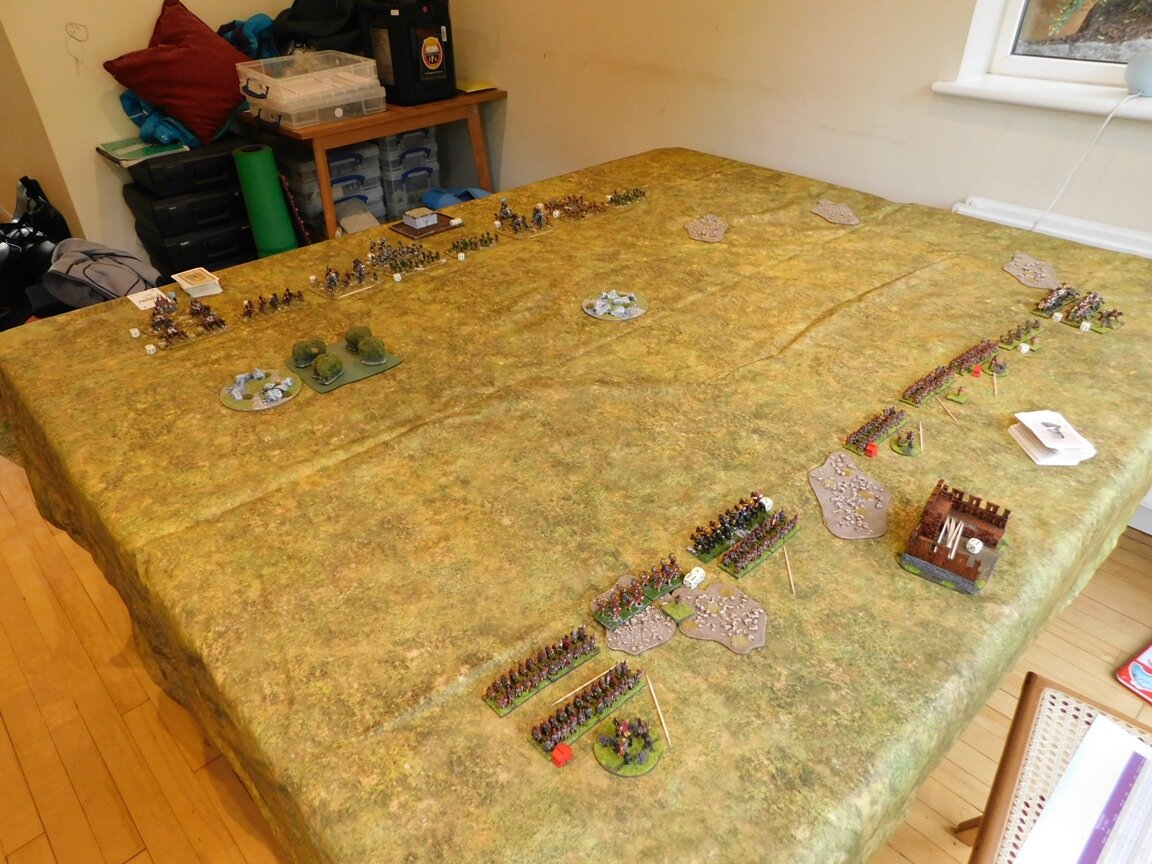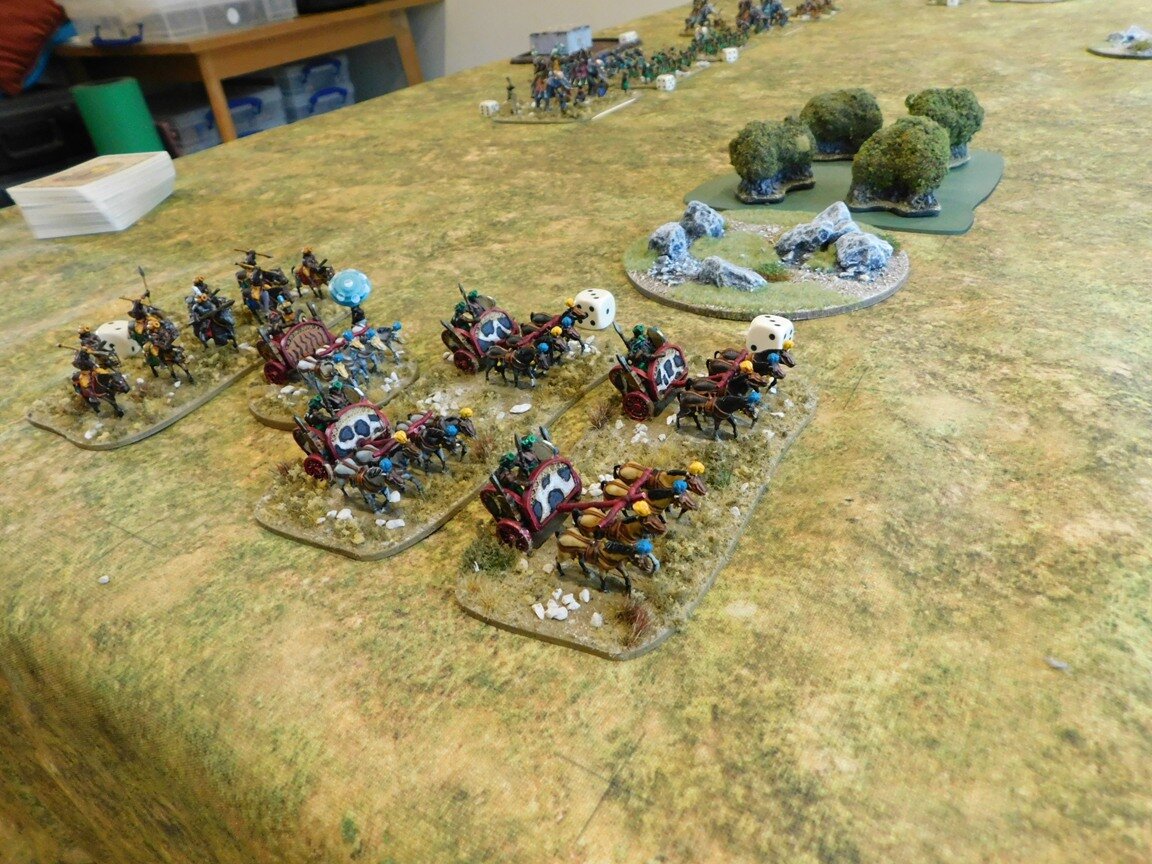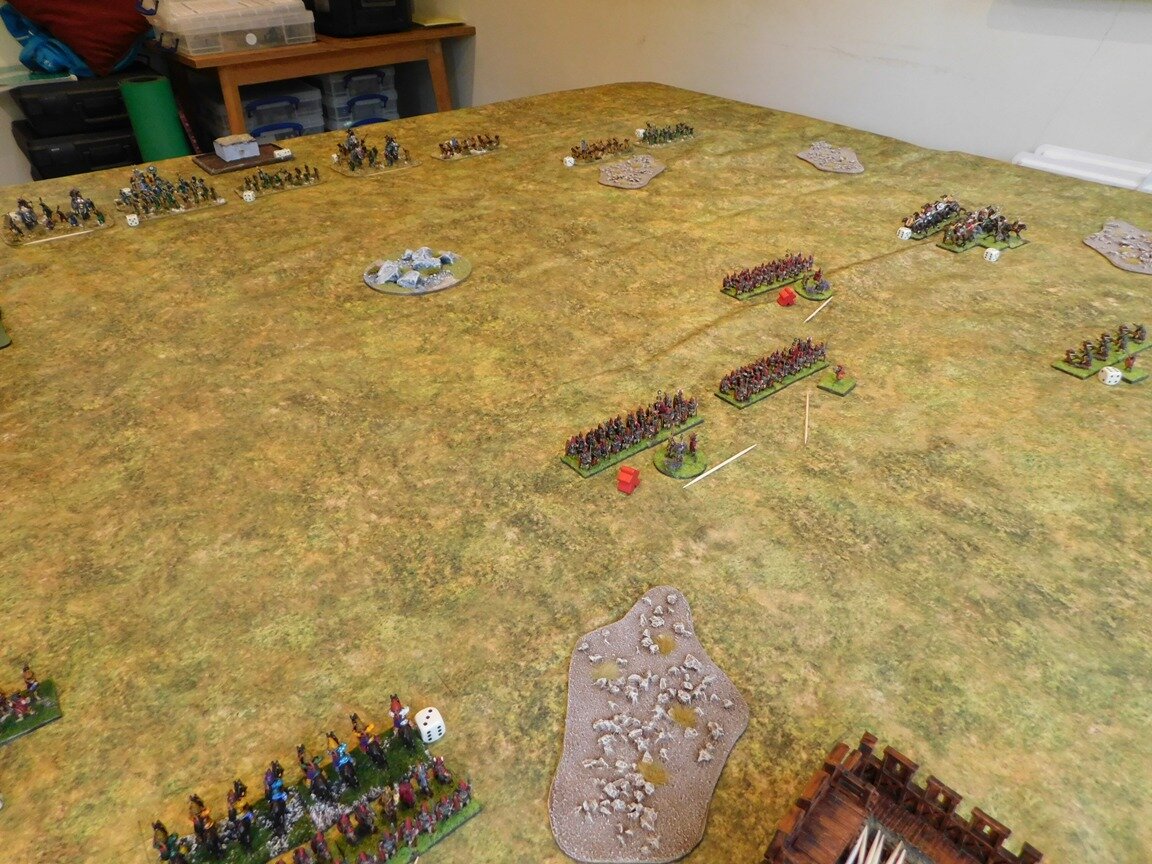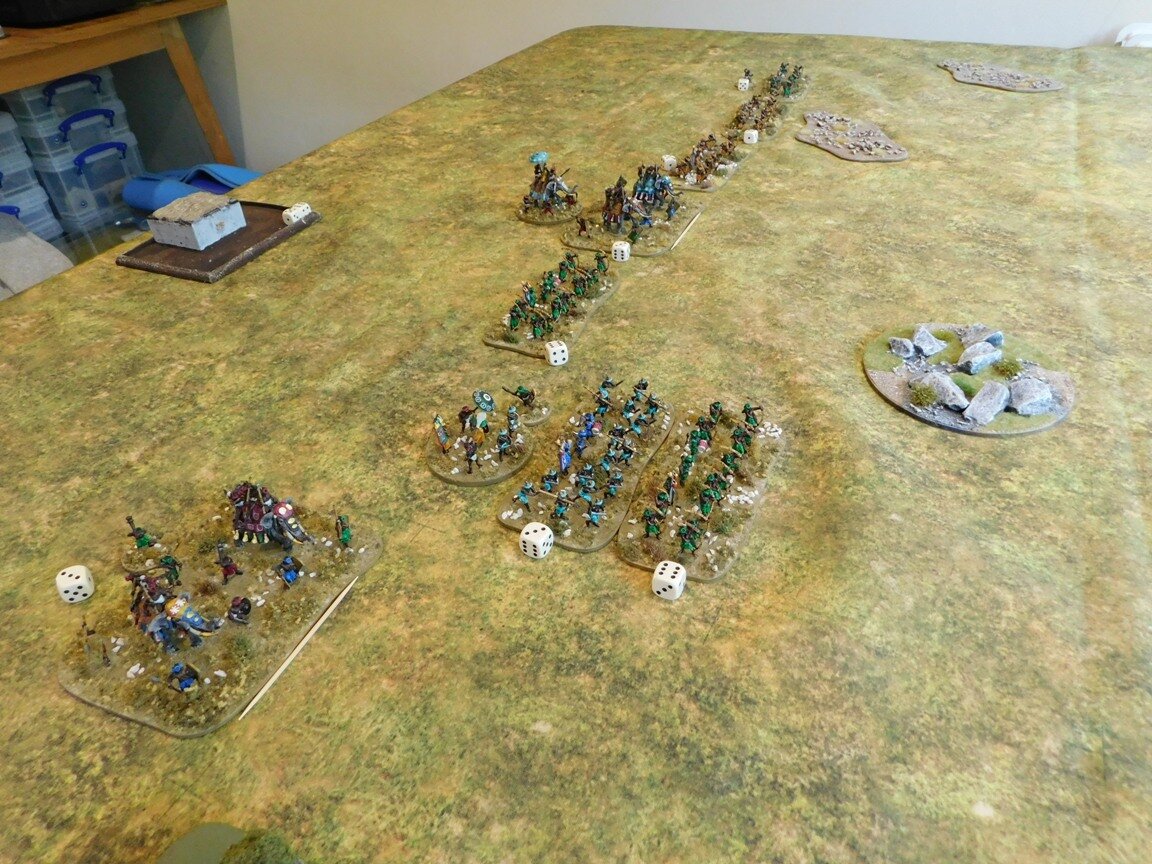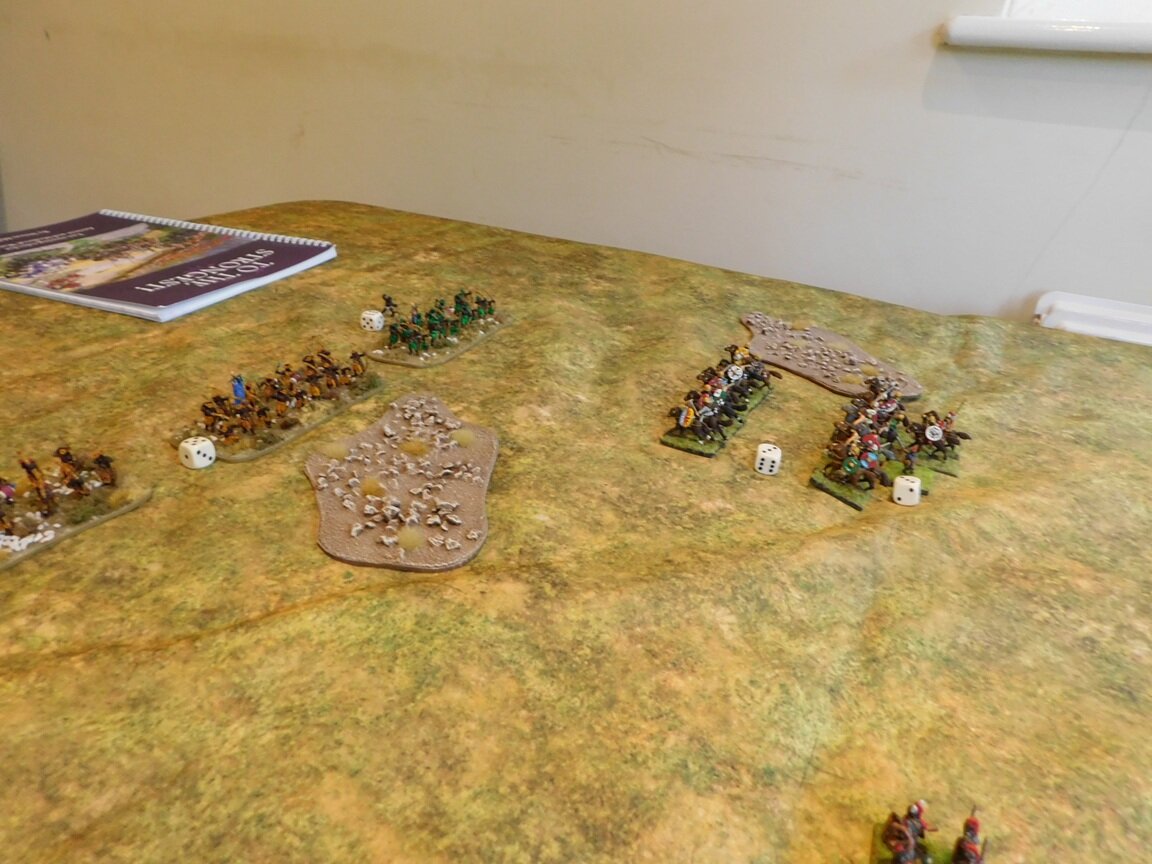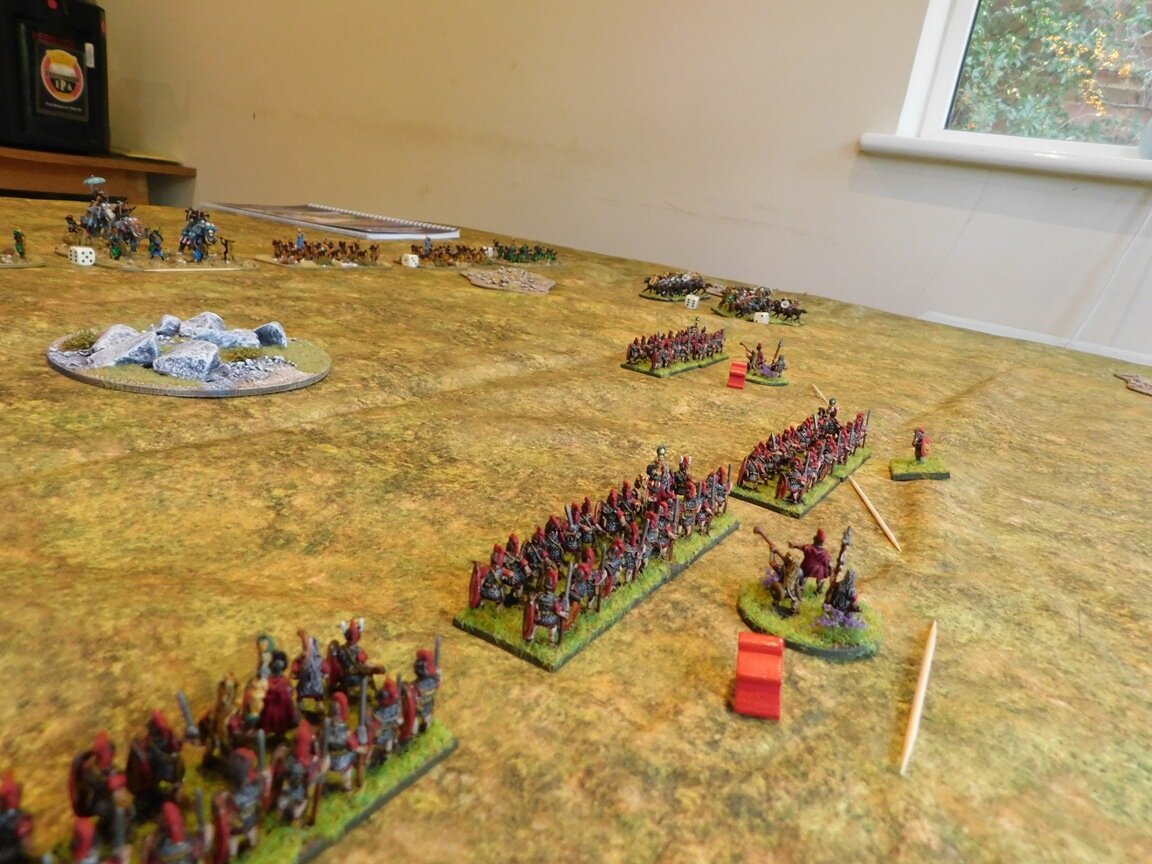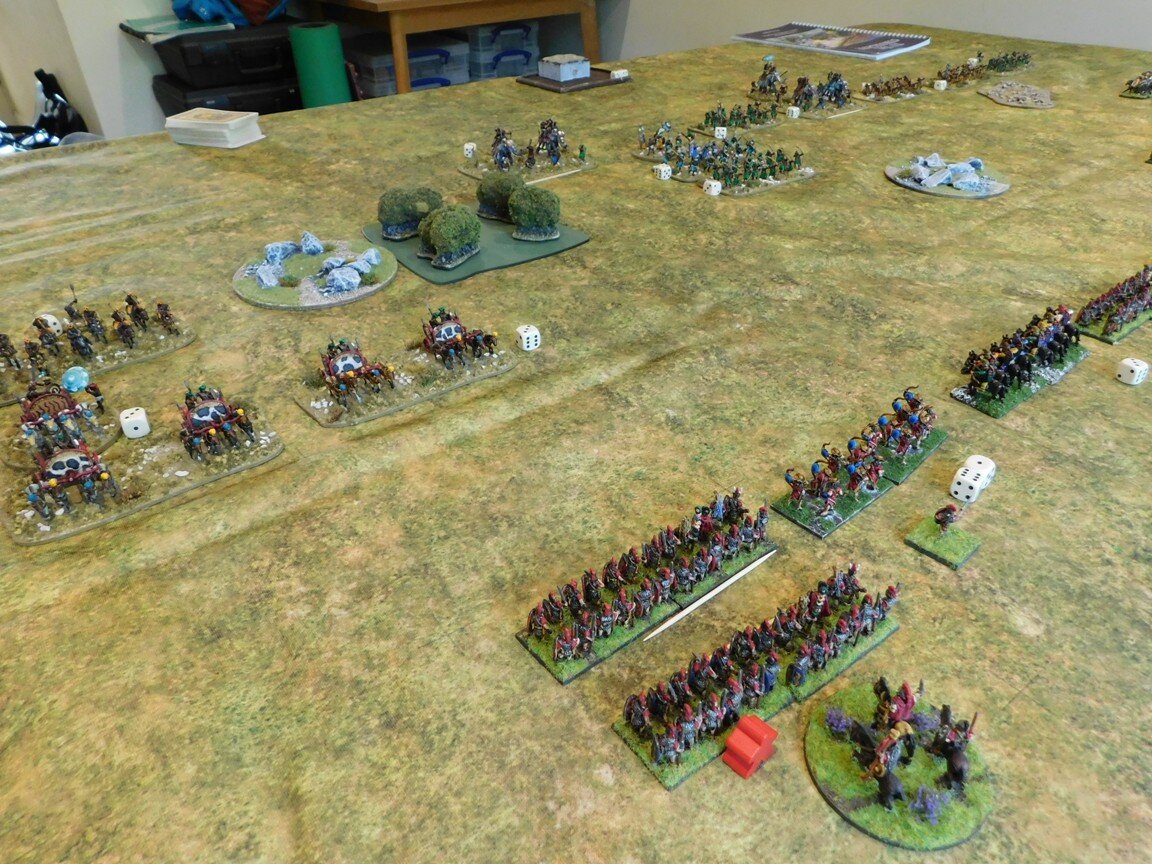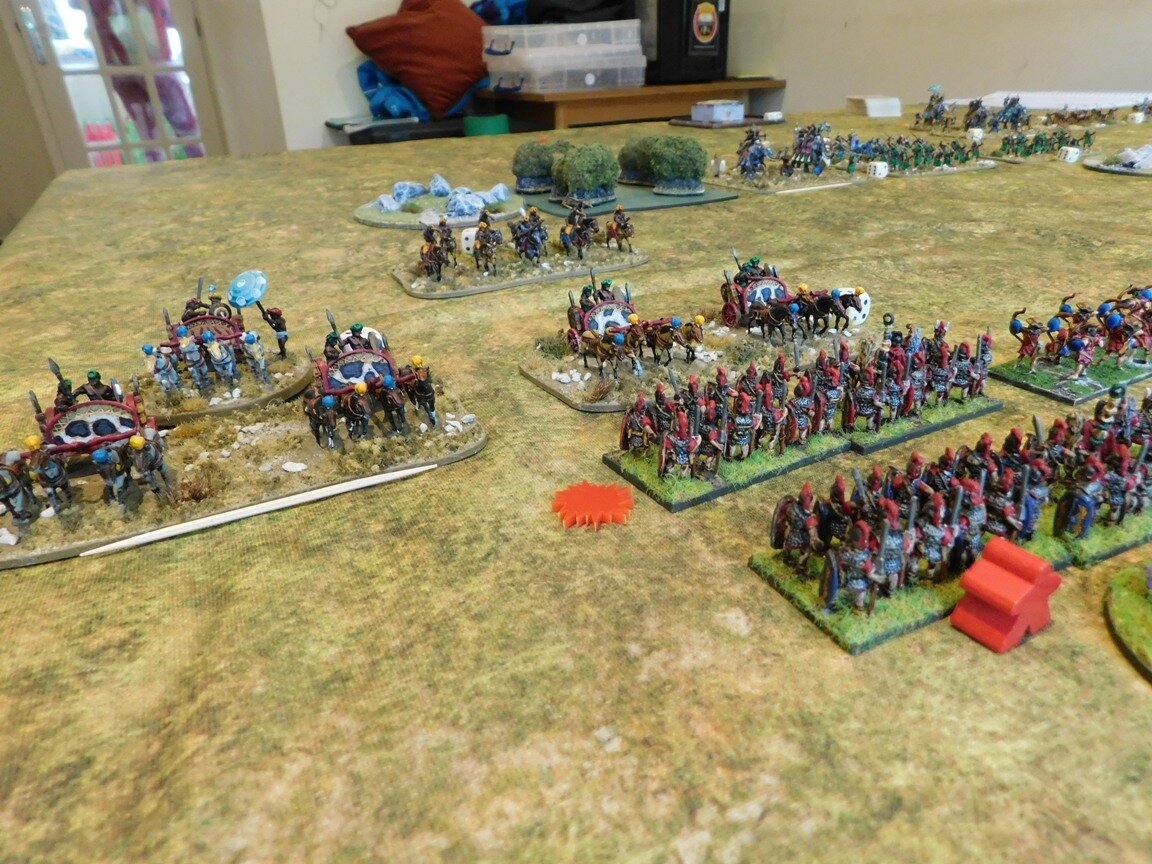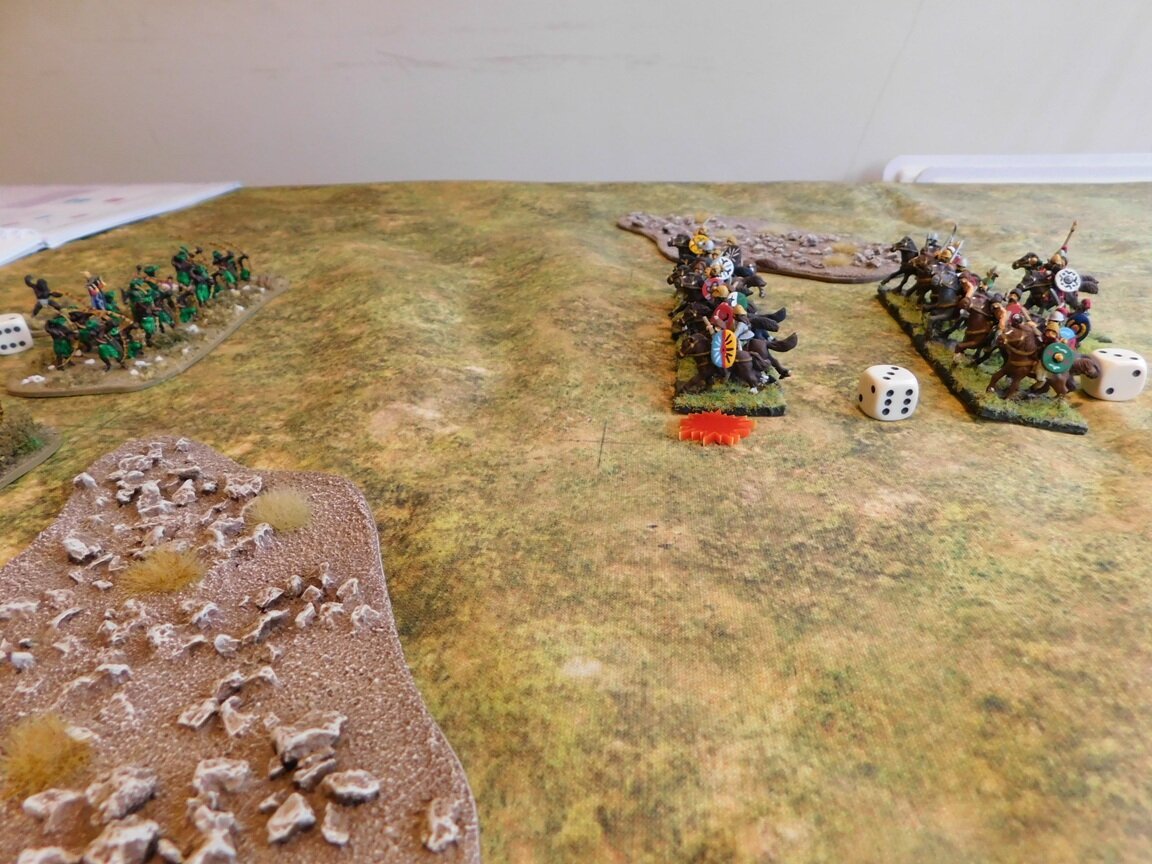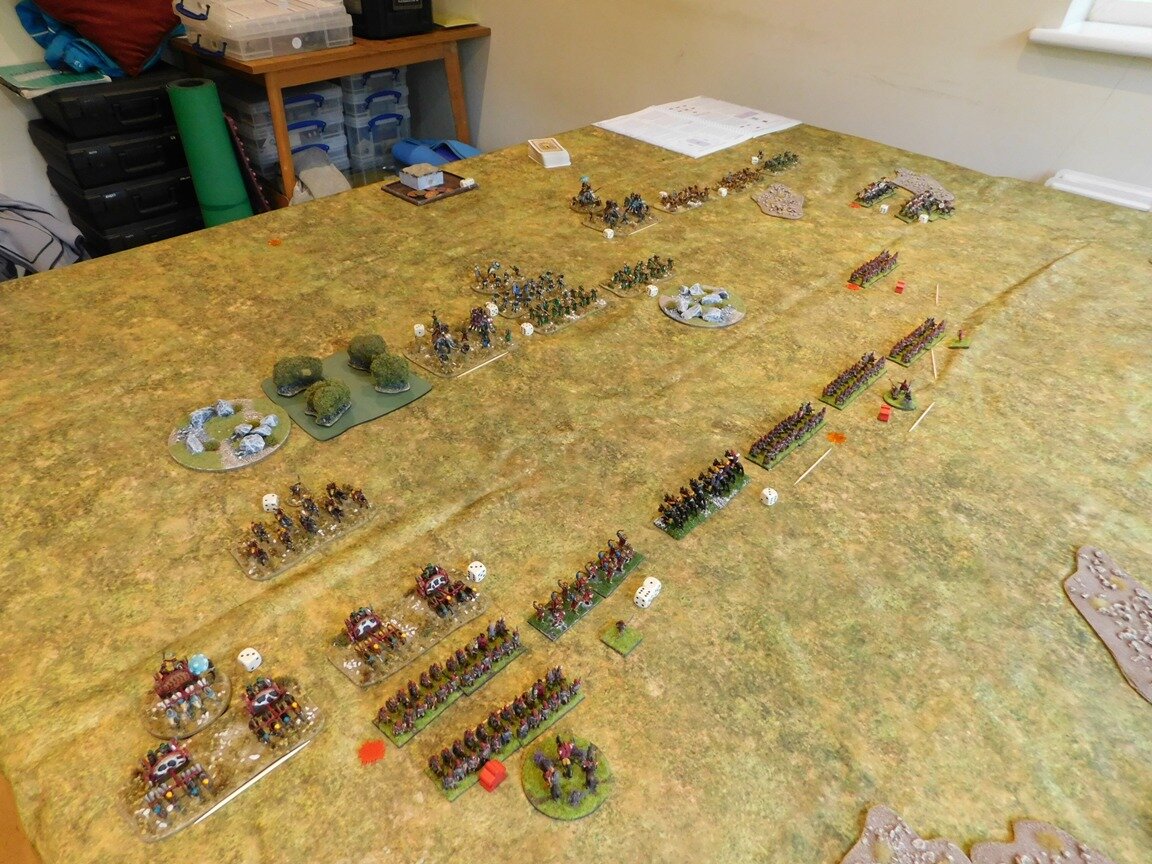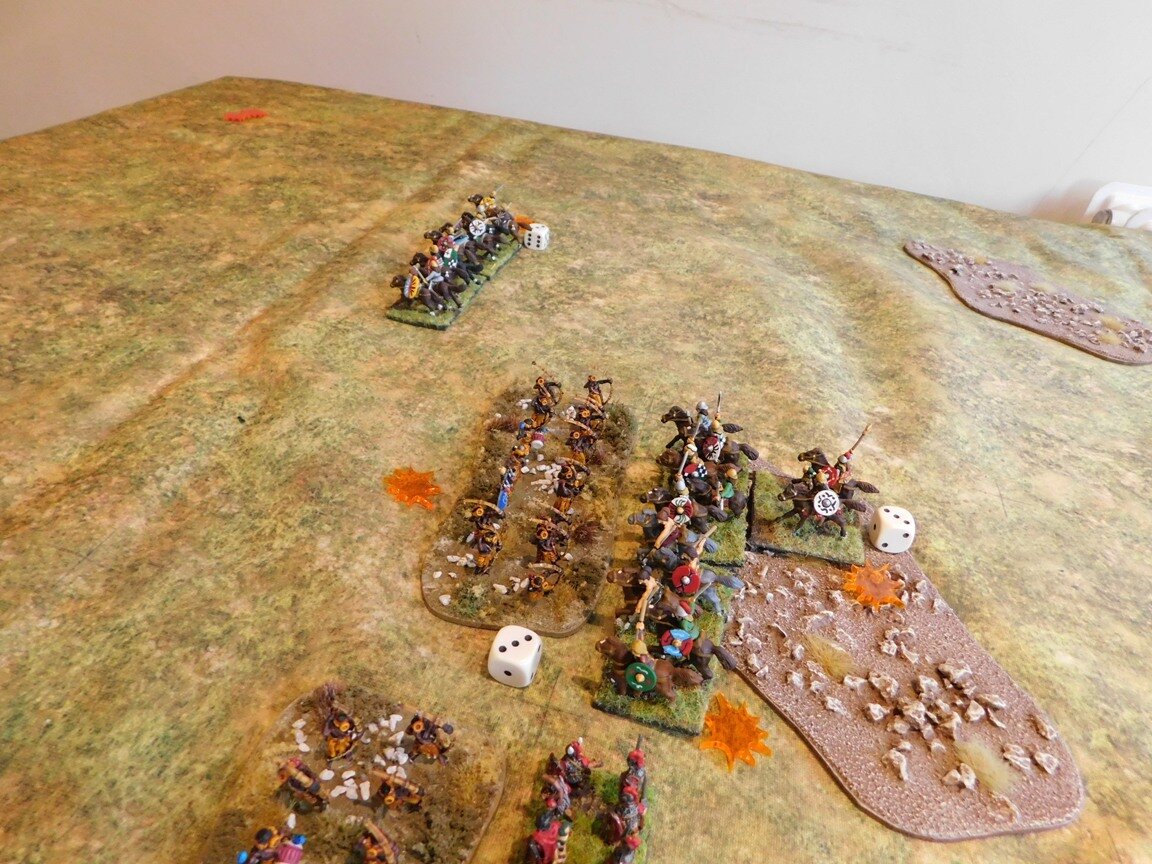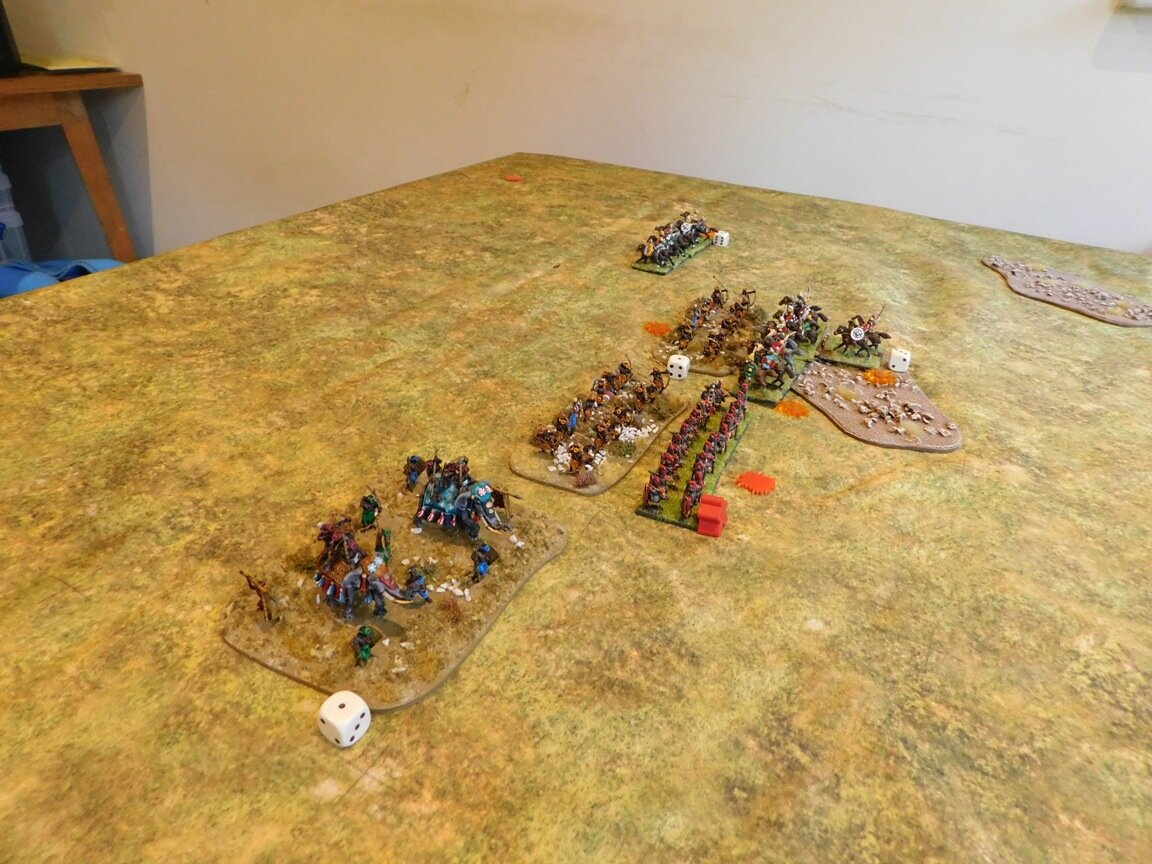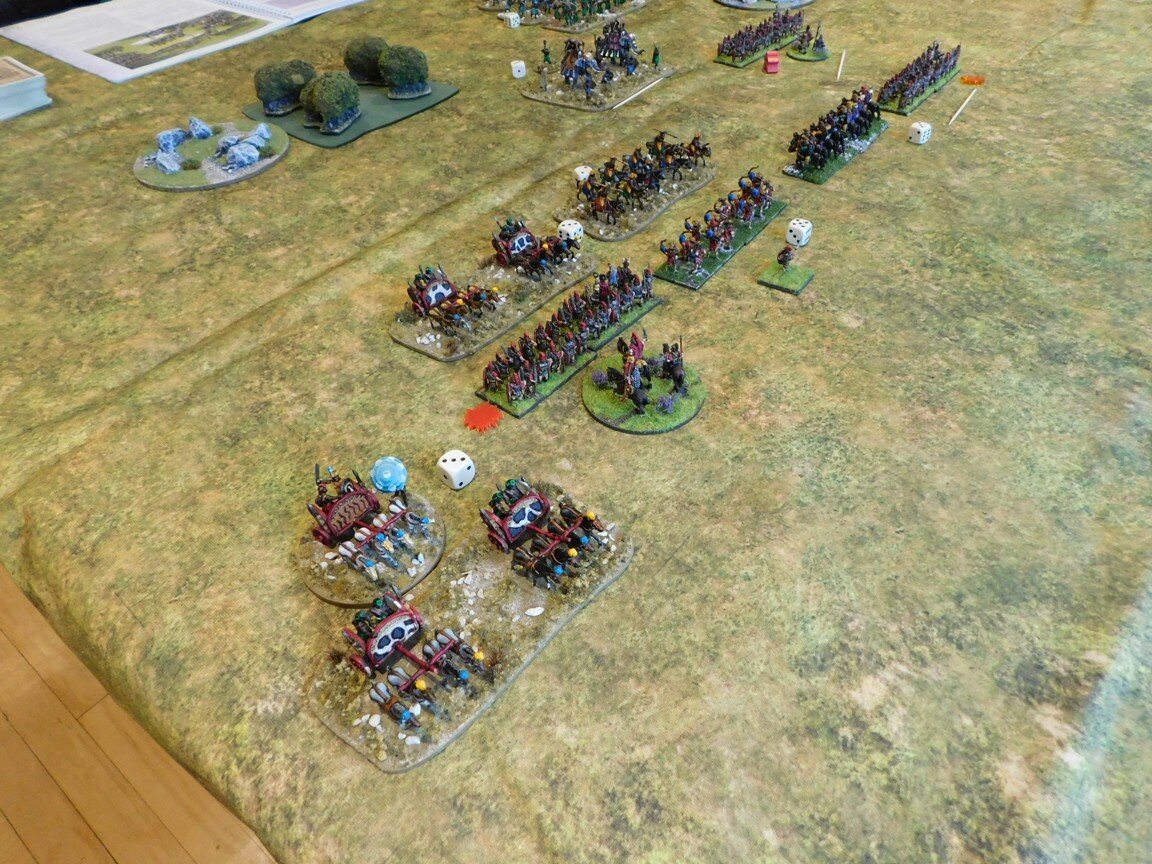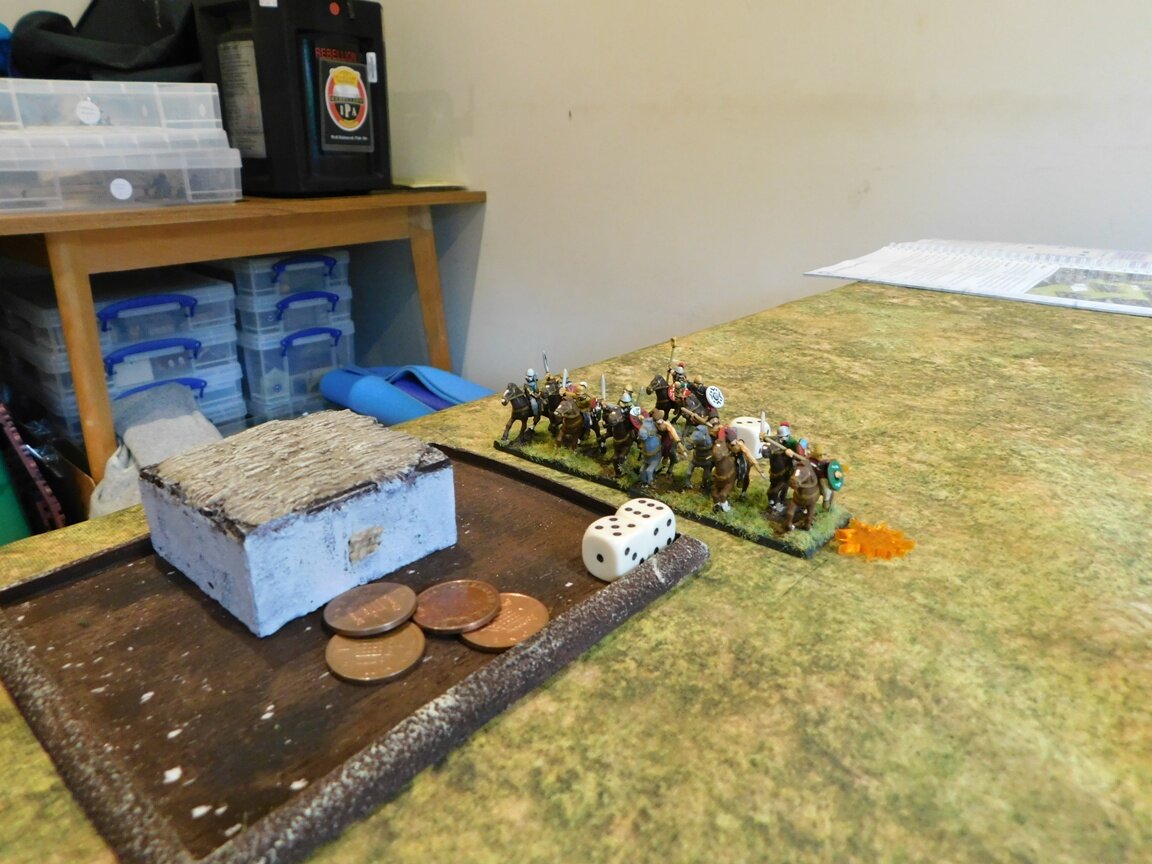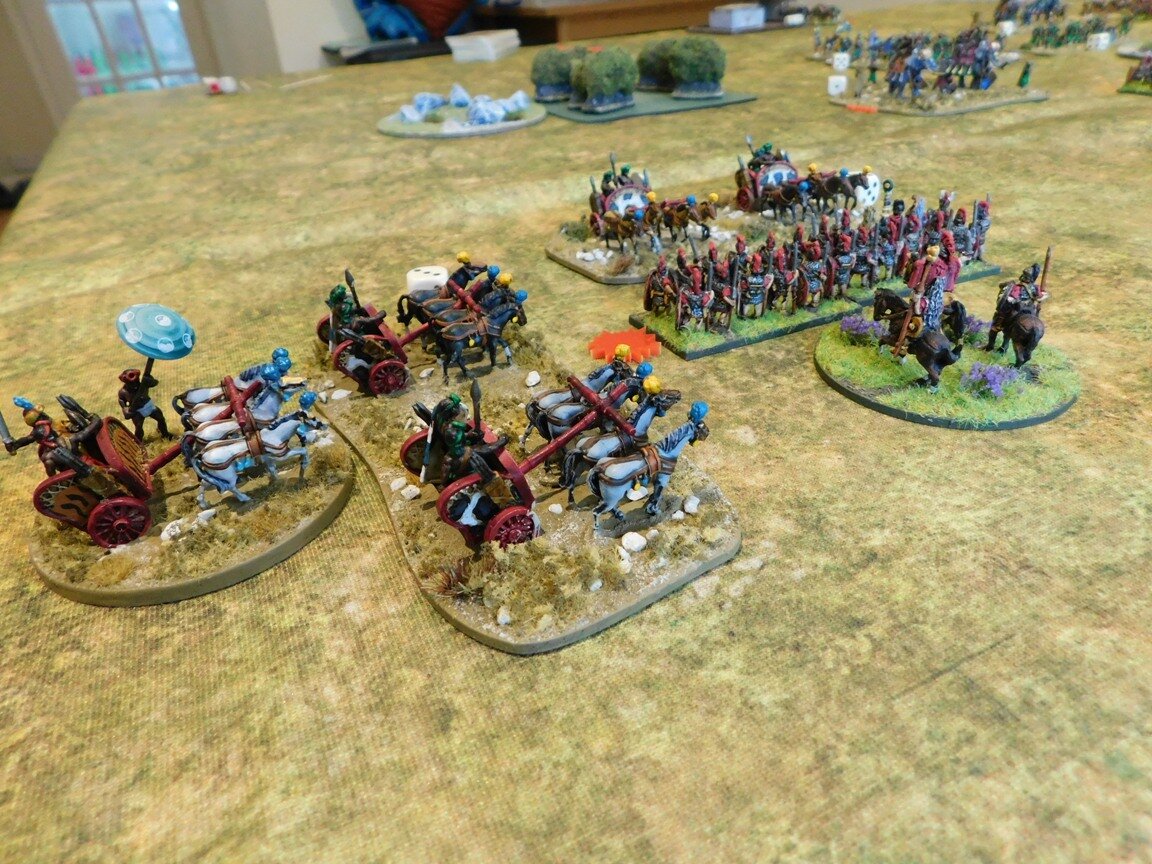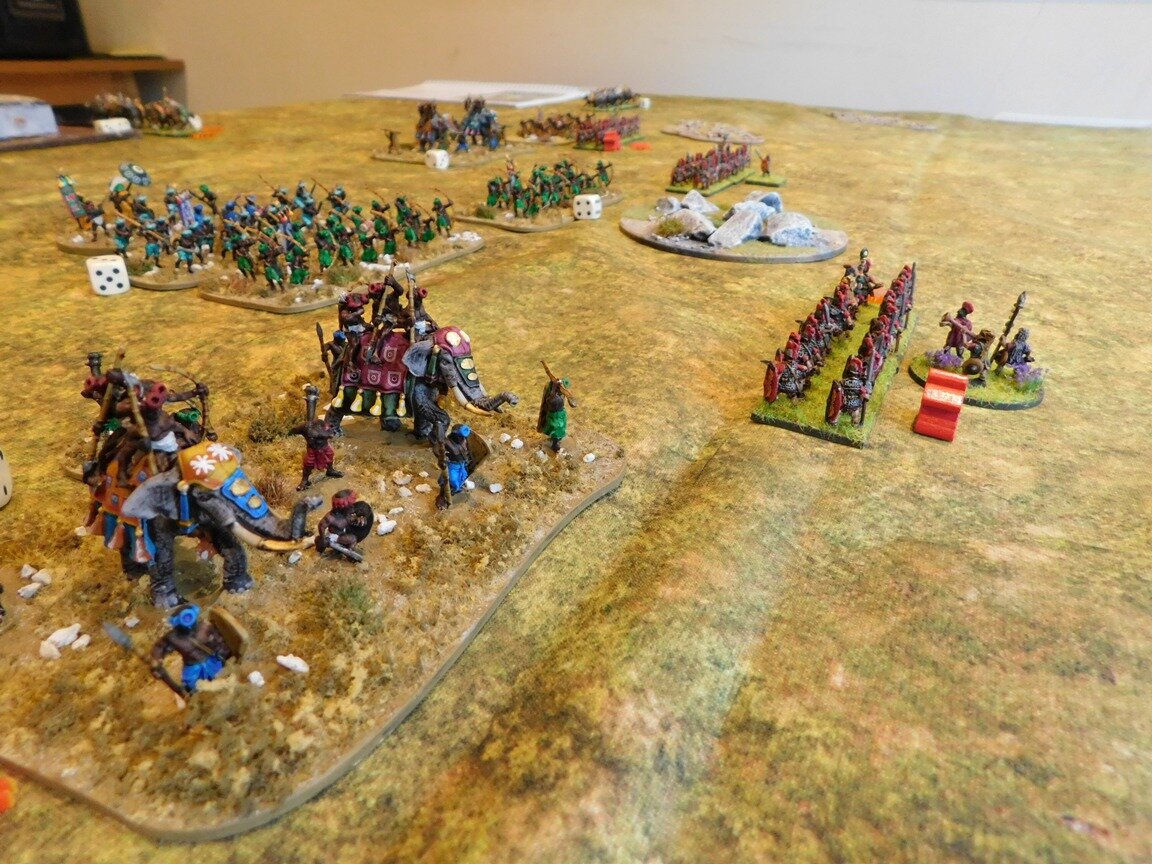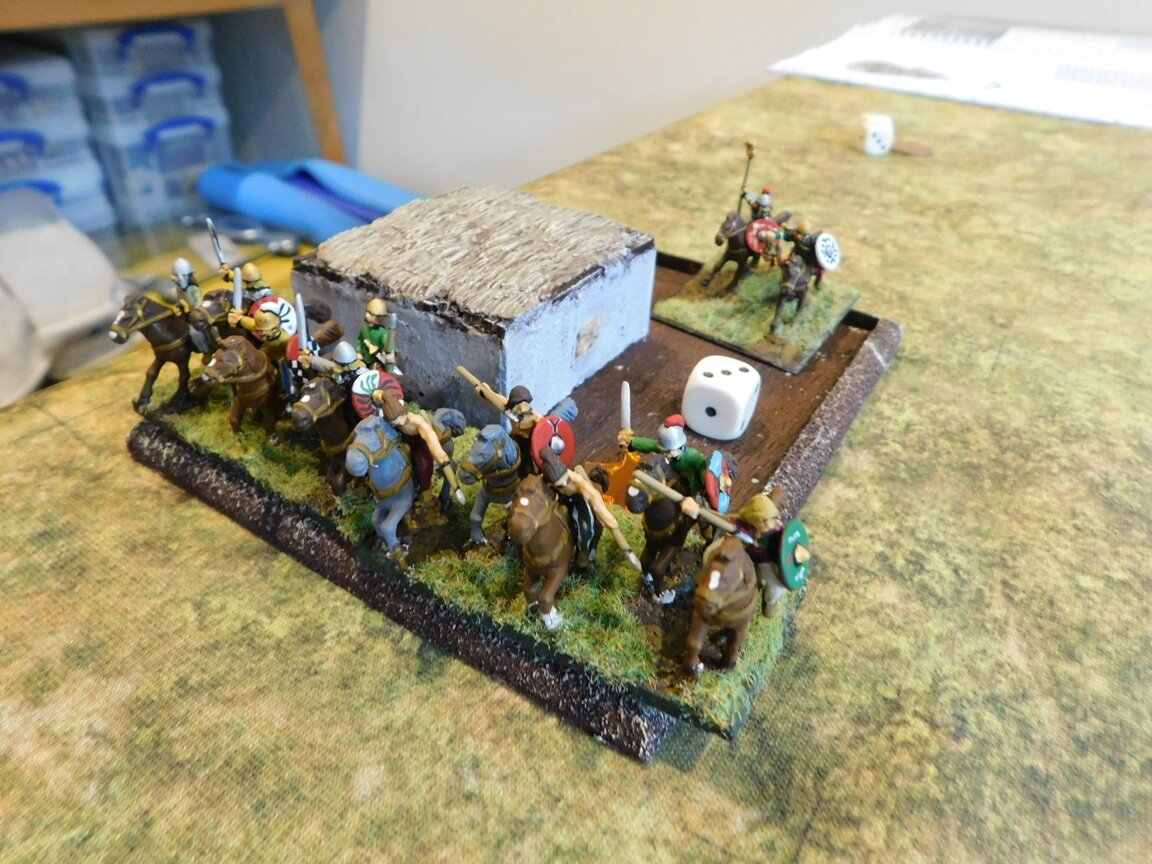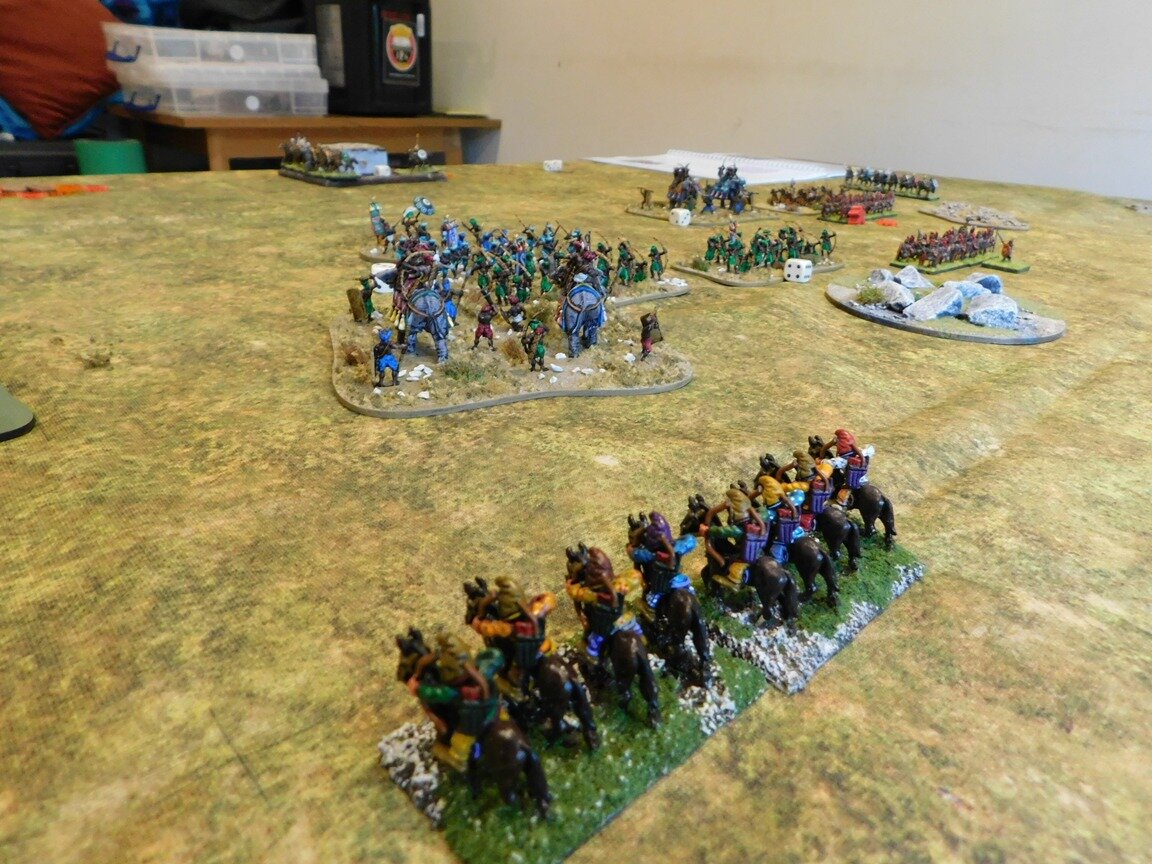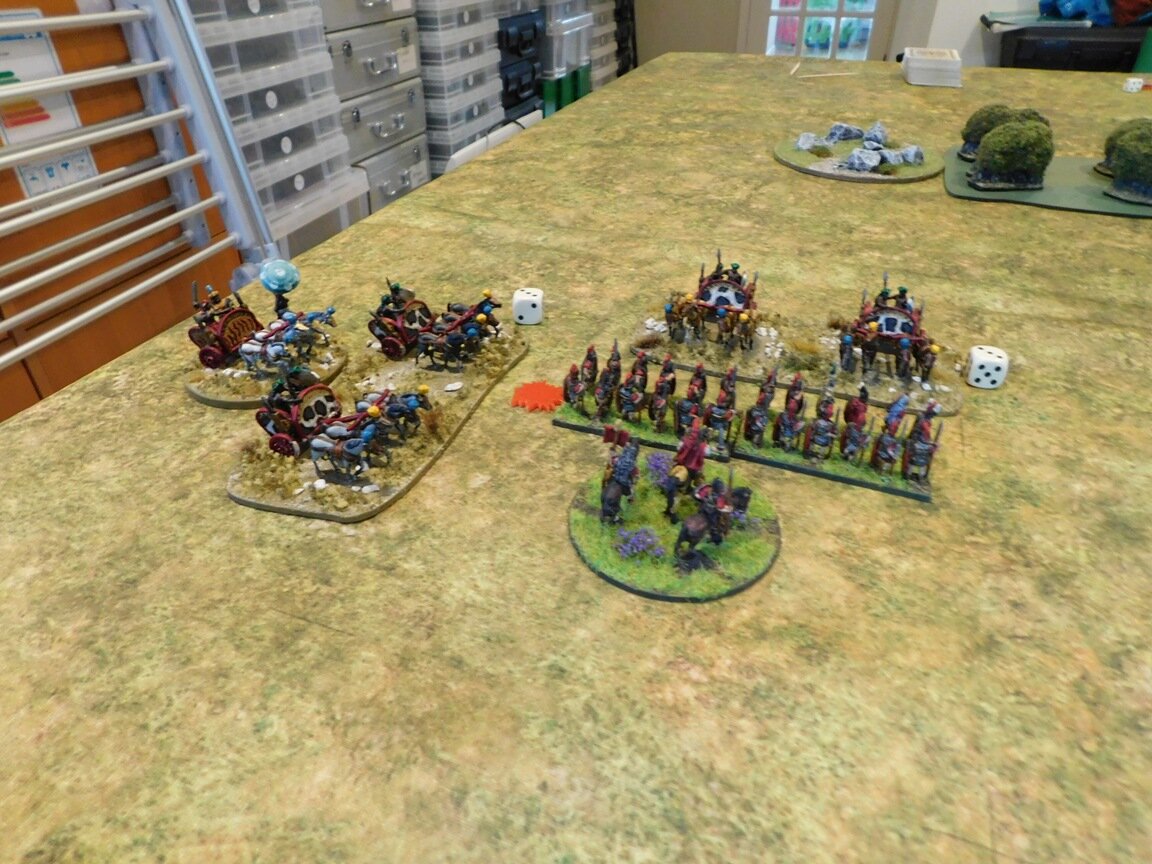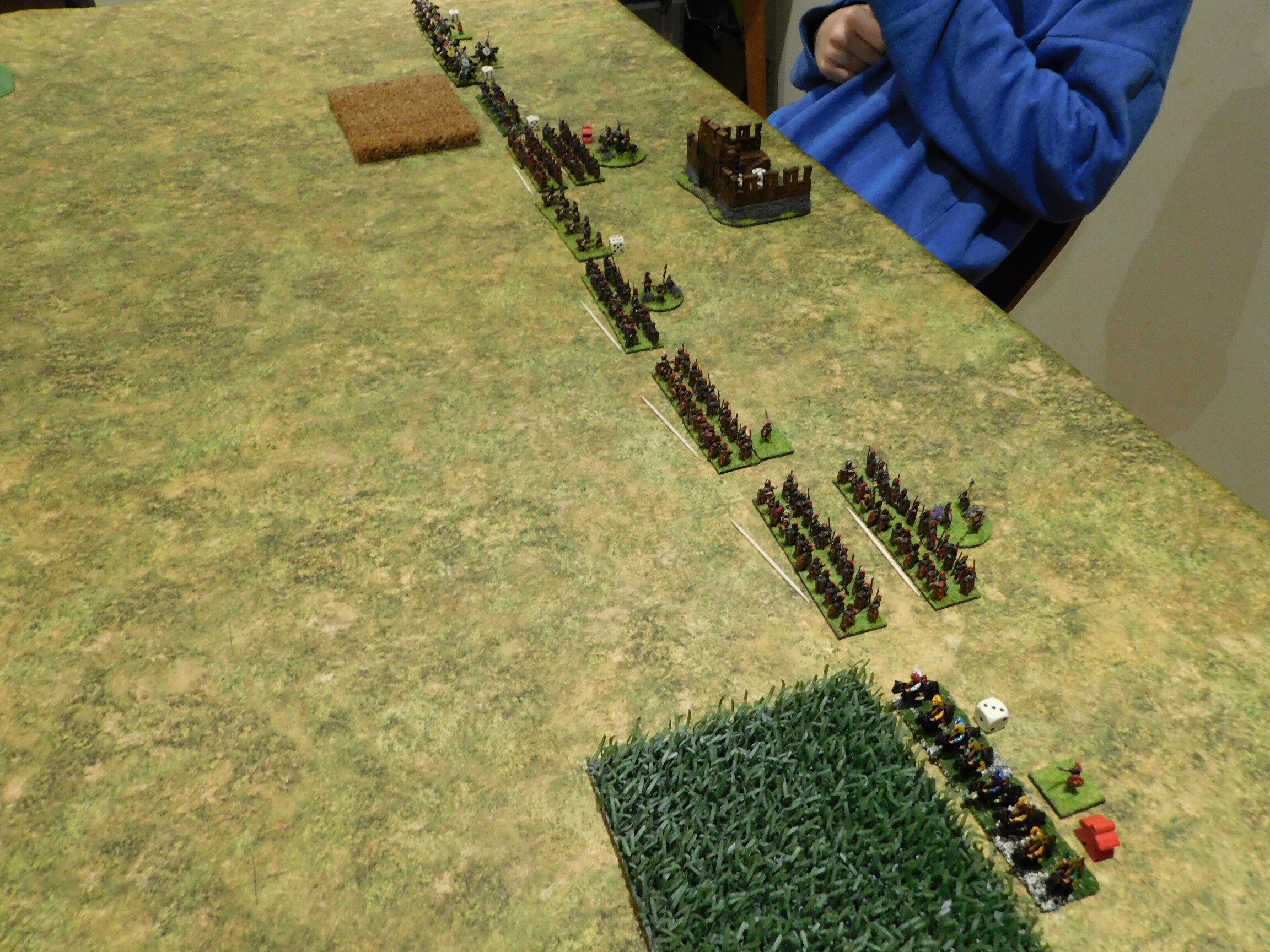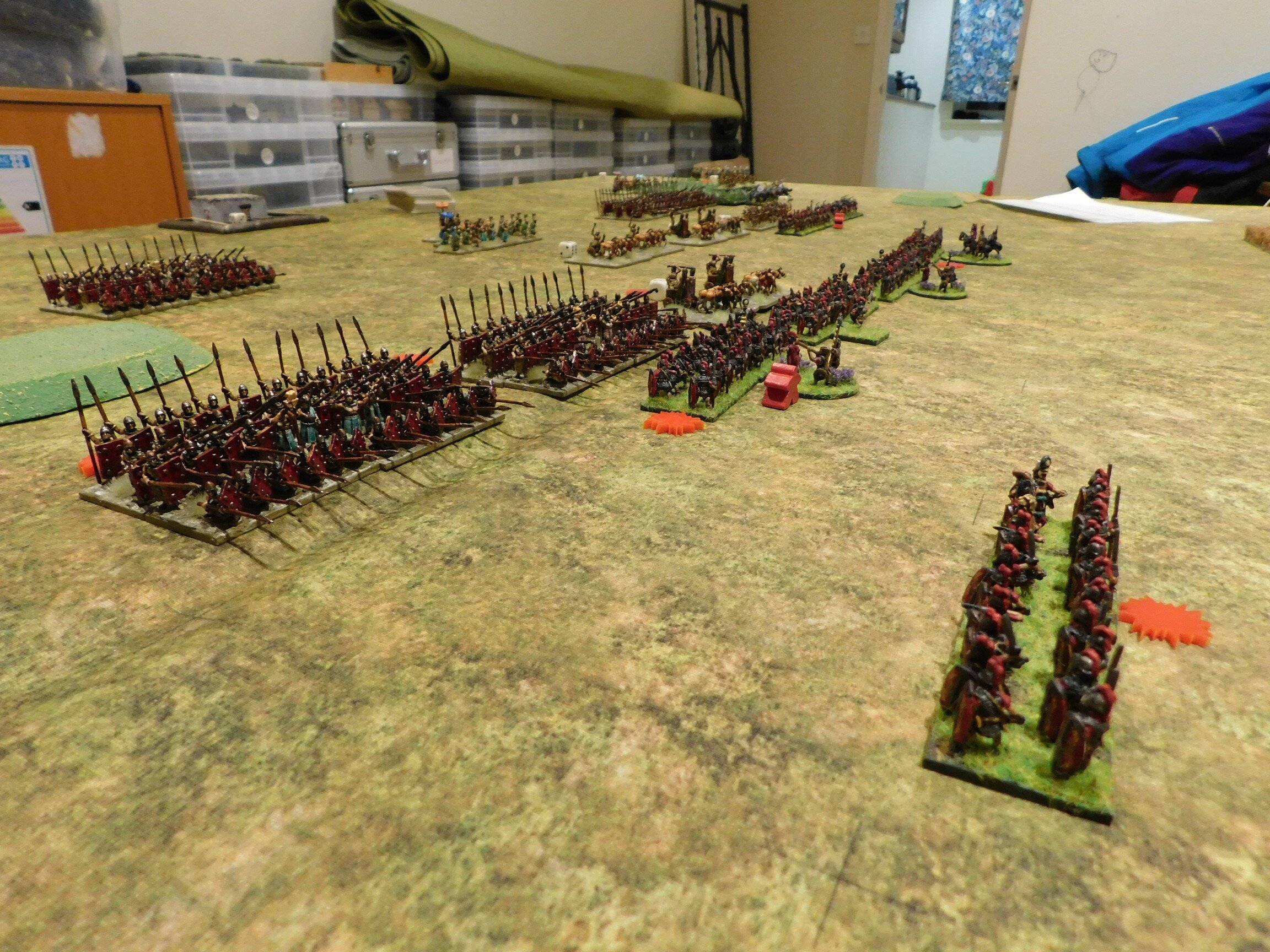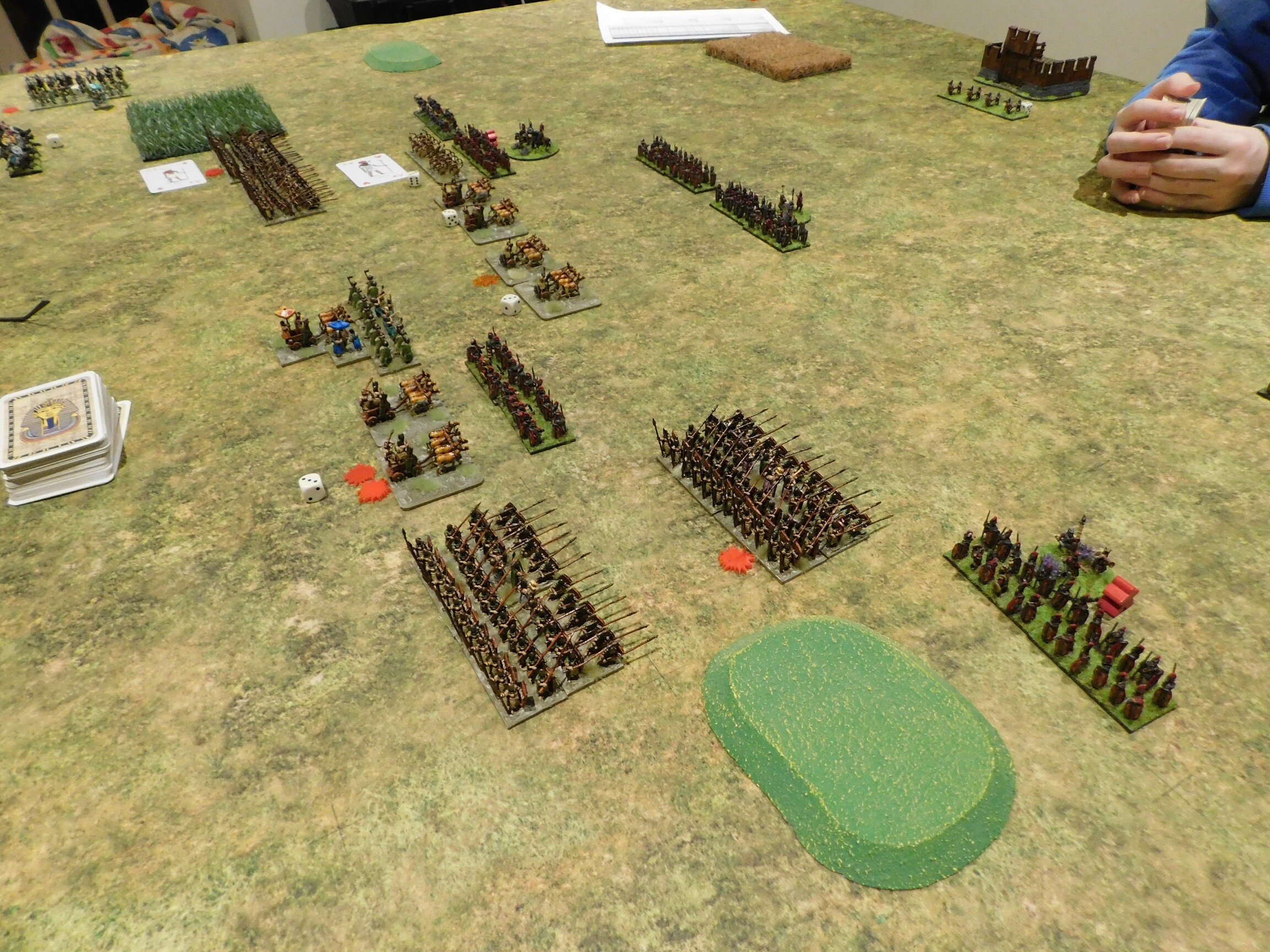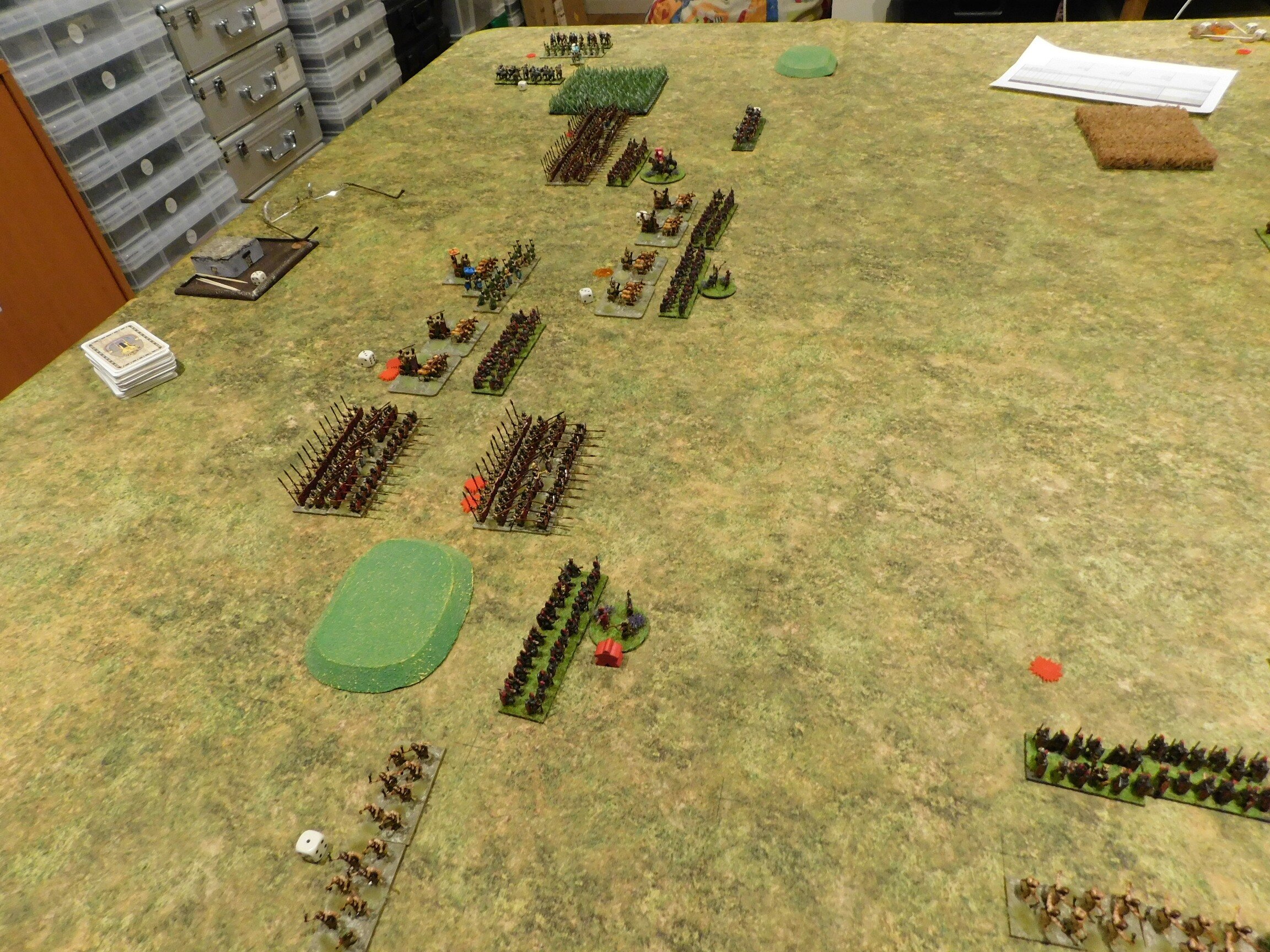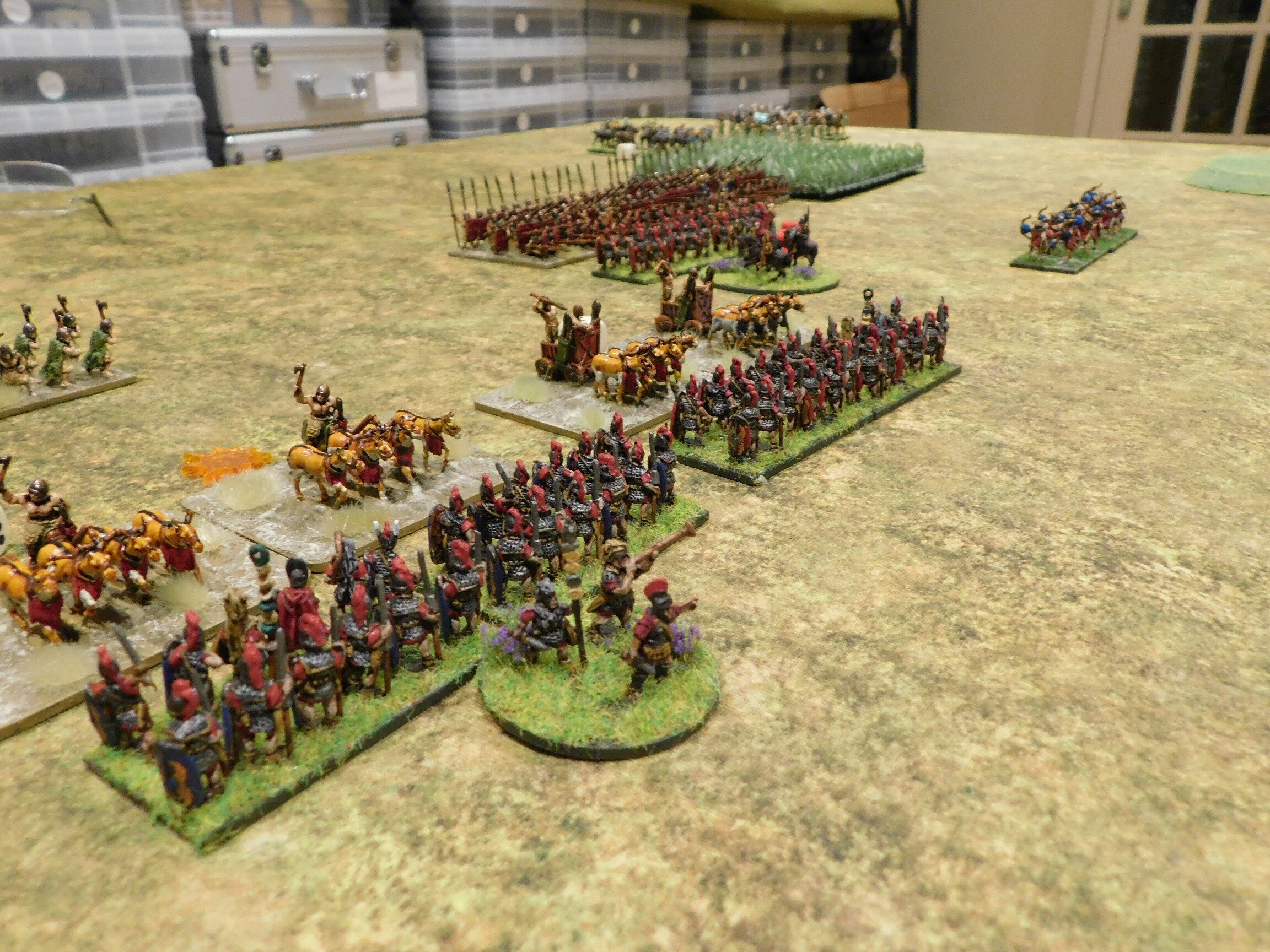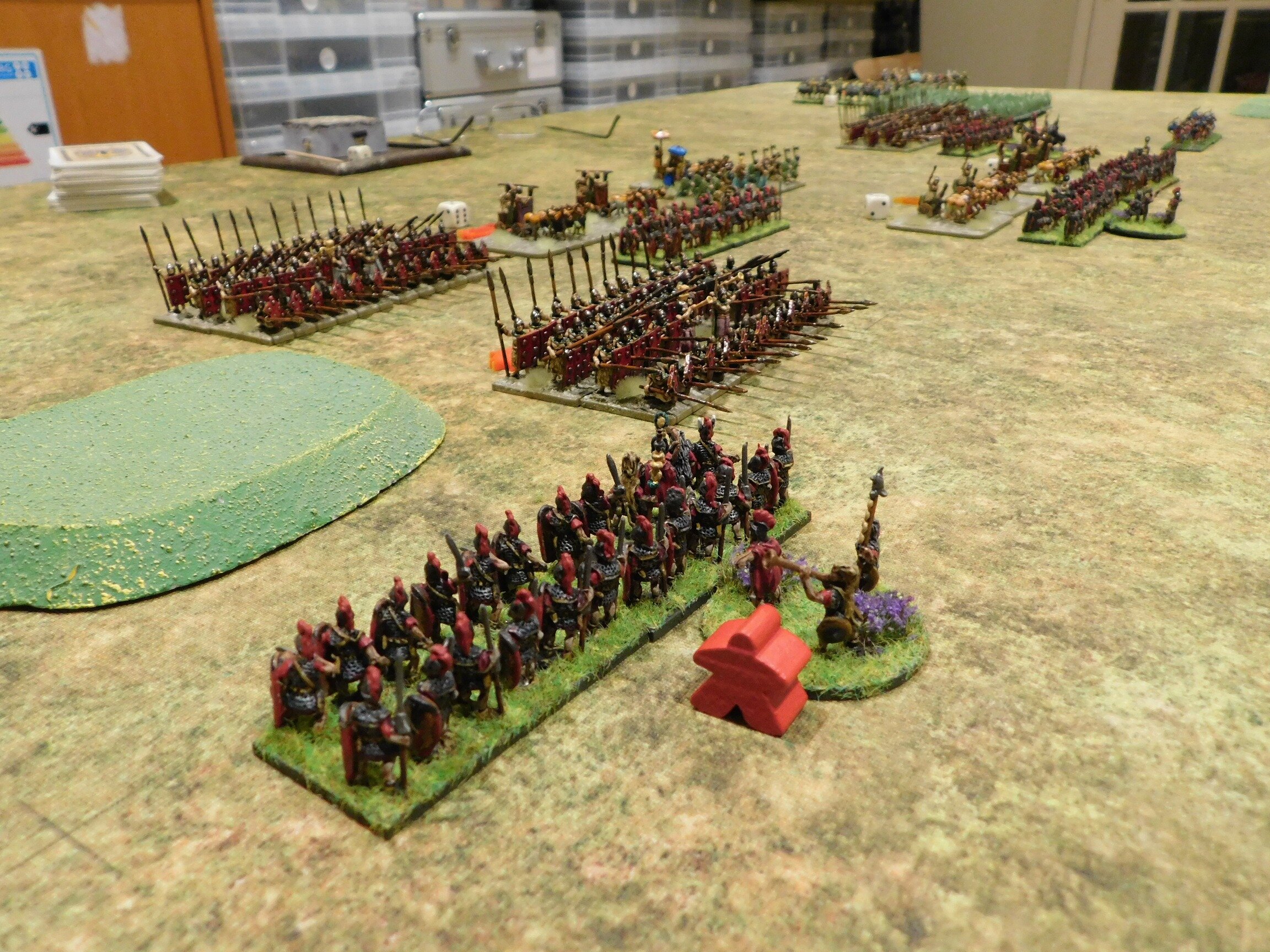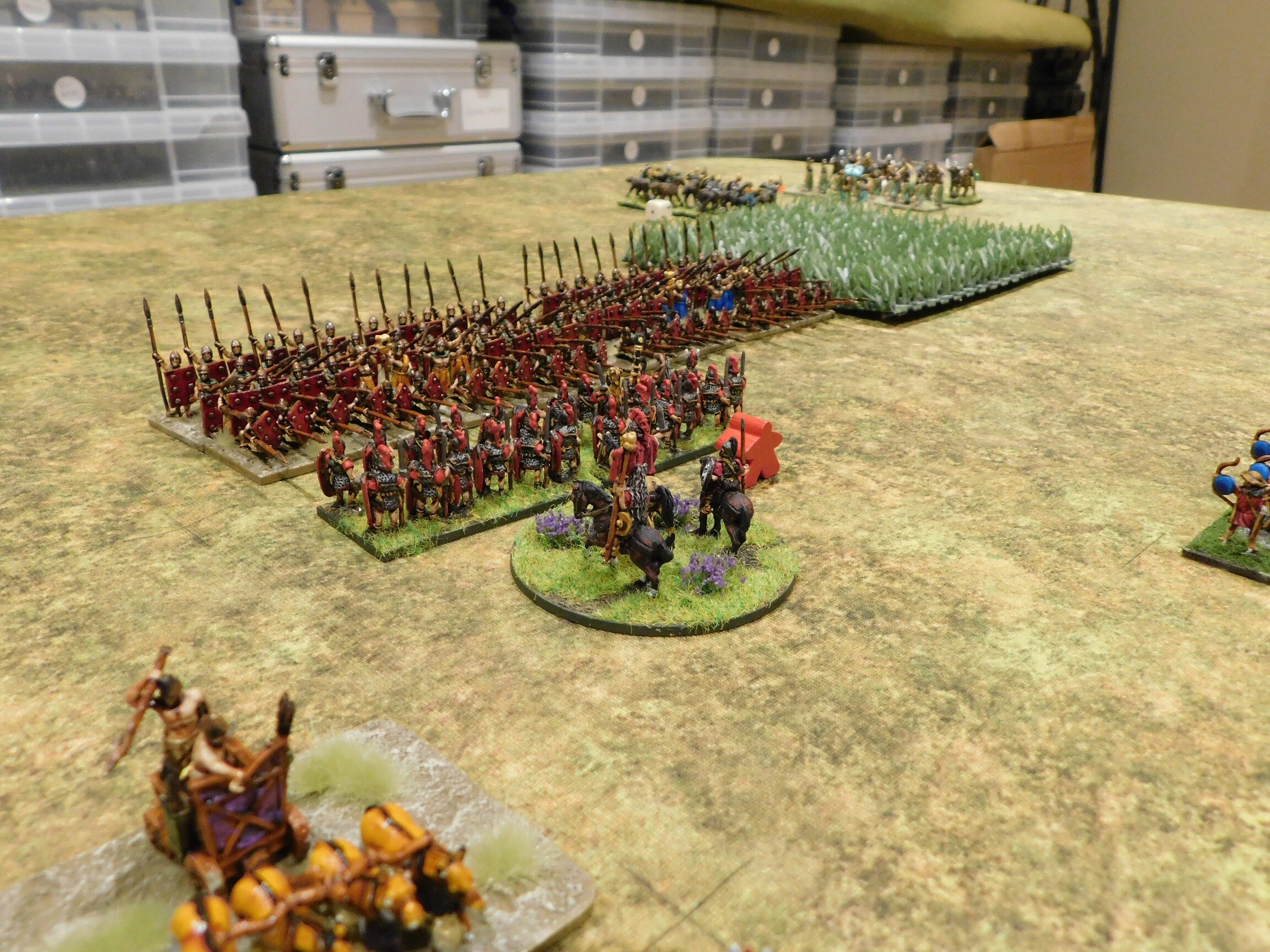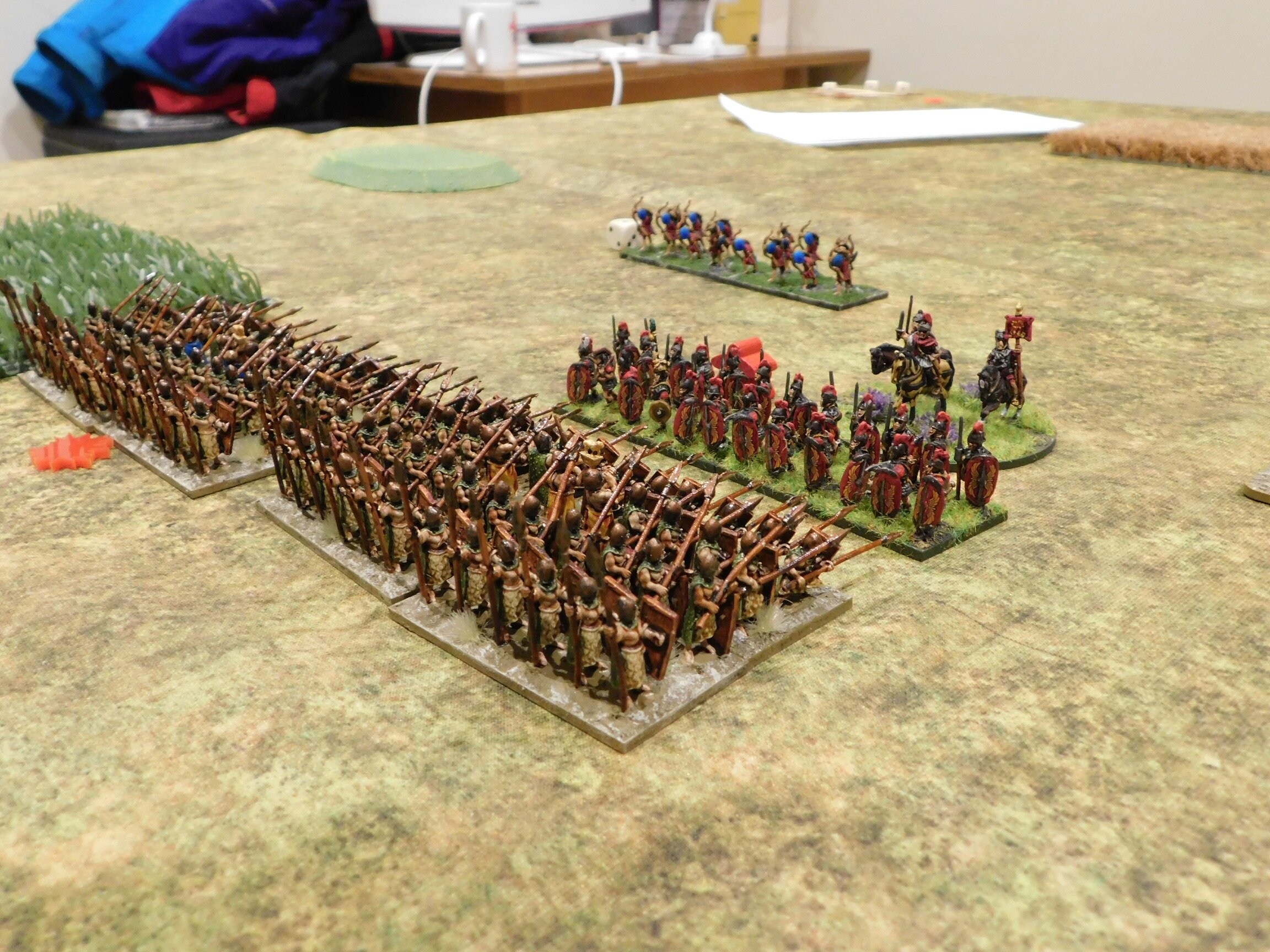Horse Archers in 28mm
/Regular visitors will know that I’m about to take part in the To The Strongest competition at Britcon this year, fielding a Roman army not in my usual 15mm scale but in 28mm, using an army borrowed from a friend.
The army is great: plenty of legionaries and auxilia etc, but a bit of playtesting revealed the need for some equites sagittarii auxiliary horse archers, of which I had none.
A quick trawl through eBay suggested that I’d need to pay vast some of money for painted models, and would be jolly lucky to be able to buy only the three that I needed. The solution was at hand, however: I could buy a single sprue of Victorix Arab horse archers for the princely sum of £9: a bargain even if I would have to build and paint the figures myself.
Building the figures was quite fun, although I did find it tricky to get the two sides of horse to fit together snugly: you’ll see the tan horse in the middle has quite a VNL (visible neck line!). The arms were also tricky: superglue wouldn’t set quickly enough so I used a mixture of PVA and superglue which did the trick nicely. Any puffing just looks like the seams of their coats are coming apart!
Painting them was easy: using Contrast paints on 28’s after 15’s is like slapping paint on a shed, and even the tack (my usual bugbear) wasn’t too bad to do. I hashed up the man in the middle’s jacket: my purple dots are not good at all…but don’t look too bad from a distance. I was, however, very happy with the faces.
So thumbs up for Victrix and multipart plastic cavalry. I won’t be switching from my beloved 15’s, but have no problems in giving these a Recommended rating!








